(Trekking) rides, weekend trips and touring by ebike are more popular than ever, but the classic trekking (e)bike as we’ve known it for years, is dead. The good news is that a new generation of eMTBs is not only ready to take their place but also promises to be a lot more capable! In this group test, we compared four different concepts and eight ebikes to tell you what really matters and which is the best ebike for touring!
Contents:
- The end of an era – The failed electrification of trekking bikes
- What do modern trekking ebikes have to be capable of?
- The test field and the different concepts in our trekking ebike group test
- Who tested the bikes, where, and how?
- What to look for when buying a trekking ebike
- The tops, flops and most exciting findings of the group test
- Which is the best ebike for modern trekking?
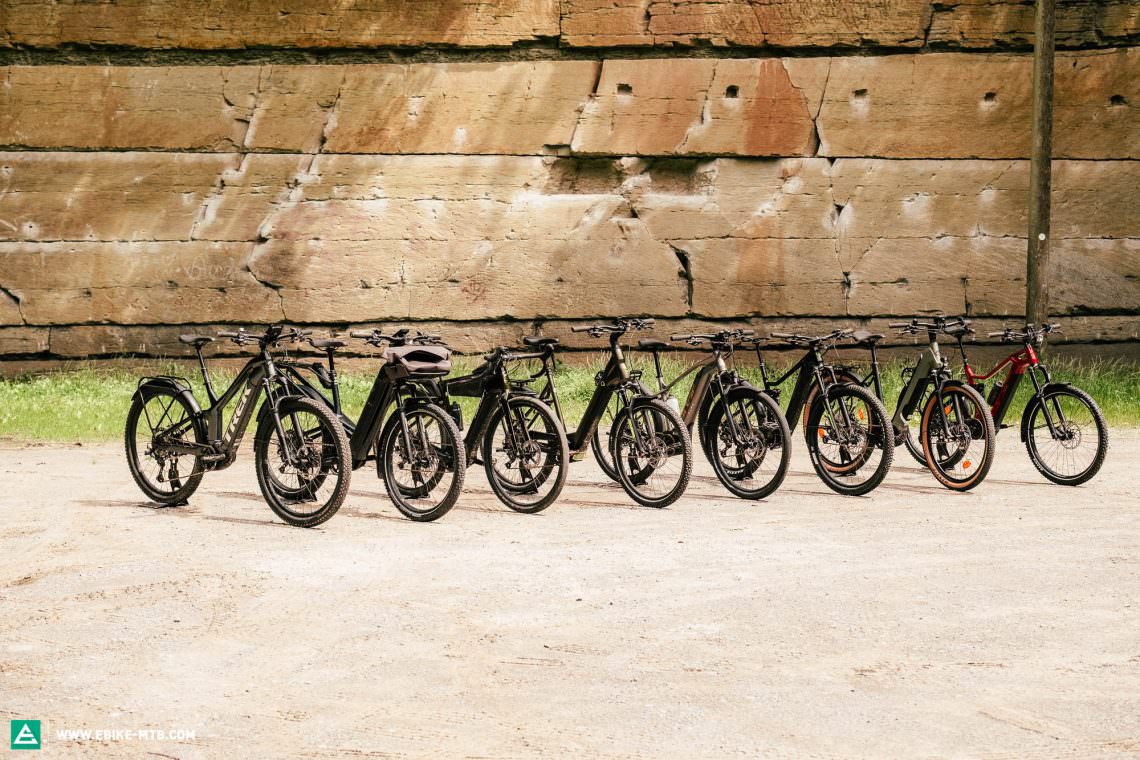
If you’re currently looking to buy a (trekking) ebike for tours, weekend excursions and cycling trips with or without luggage, you’re running the risk of buying a bike that is less capable and significantly less safe than what the latest tech allows. Trekking bikes have remained largely unchanged for decades but that era is coming to end, if it hasn’t already! Many find it difficult to find the right E-trekking bike amongst all the marketing hype, with numerous bikes that all claim to be capable of the same things despite different concepts and designs. How do we know, you ask? We regularly receive inquiries from readers that are overwhelmed by all the types of bikes, options and models for trekking, touring and light trail use. This reinforces the fact that the bicycle industry makes it difficult for customers to make the right choice, even though they’re willing to invest thousands of euros in a bike. Indeed, spending the money sensibly and avoiding the wrong choices can be difficult, even if you know exactly what you want.

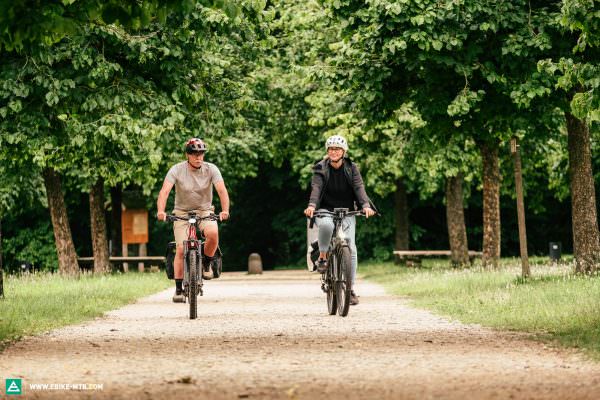

What is trekking? Our goal is to clarify the term and to redefine it with regard to ebikes.”

Our group test of eight bikes and four ebike concepts gives you everything you need to know to make an informed decision before you buy. We don’t only give you a comprehensive overview of the most important ebike concepts for trekking and touring on the market, but also tell you which ebike is right for which purpose. Not all E-trekking bikes are equal. We’ve included useful tips and tricks as well as noting potential stumbling blocks and no-go’s that you should do your best to avoid! Only those who have the right information can make the right choice and thereby avoid spending their hard-earned cash on the wrong bike.
Touring-oriented ebikers need more clarity to find the right bike in the jungle that is the bicycle industry. Our group test is here to give you a comprehensive overview and avoid disappointment”

Before we dive deeper into the topic, we want to make one thing clear. We believe that there is a right bike for every job. We’re not here to make absolute claims about which one is right or wrong. Instead, we want to equip you with the knowledge and skills to find the bike that’s perfect for your requirements and will make you happy. As such, we try to judge the bikes in the right context, according to their strengths and weaknesses. Based on this information, you can then decide whether the bike suits you and your needs. With that in mind, let’s tackle this together and see what trekking 2.0 is all about.

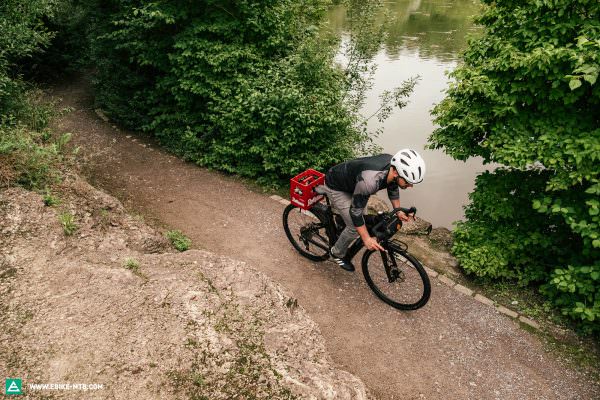

End of an era – The failed electrification of trekking bikes
The demands on E-trekking bikes have increased significantly. Everyone wants one bike that can do it all. It’s got to be safe, comfortable and versatile enough for everything from long tours, commuting, night rides and shopping, to multi-day cycling trips with luggage. If you go to a dealer with these requirements, they’ll typically recommend a trekking bike, as they would have done twenty years ago, even if it now might come with a motor. That’s how it’s always been, but does it still make sense today? No! The electrification of trekking bikes has failed. Why? Because nobody bothered to adapt the classic trekking bike design to match the added weight and increased loads of the battery and motor when ebikes first appeared on the scene. For a long time, no one saw the potential of trekking ebikes, nor did they recognise that efficiency plays a much smaller role than it does on their analogue counterparts. In the years that followed, the status quo remained unchallenged and, as a result, the motorised representatives of trekking bikes weren’t built in a way that exploited this new technology and its possibilities. Although the bikes had a motor, a battery and other necessary components, they didn’t actively make use of the advantages they offer. Case in point: rolling resistance. Skinny, fast-rolling tires are no longer that important. The bikes have a motor and battery, which makes rolling resistance a non-factor and opens up new possibilities when choosing the tires. And yet, many trekking ebikes are still being specced with skinny tires in 2021 even though they don’t offer any significant advantage.
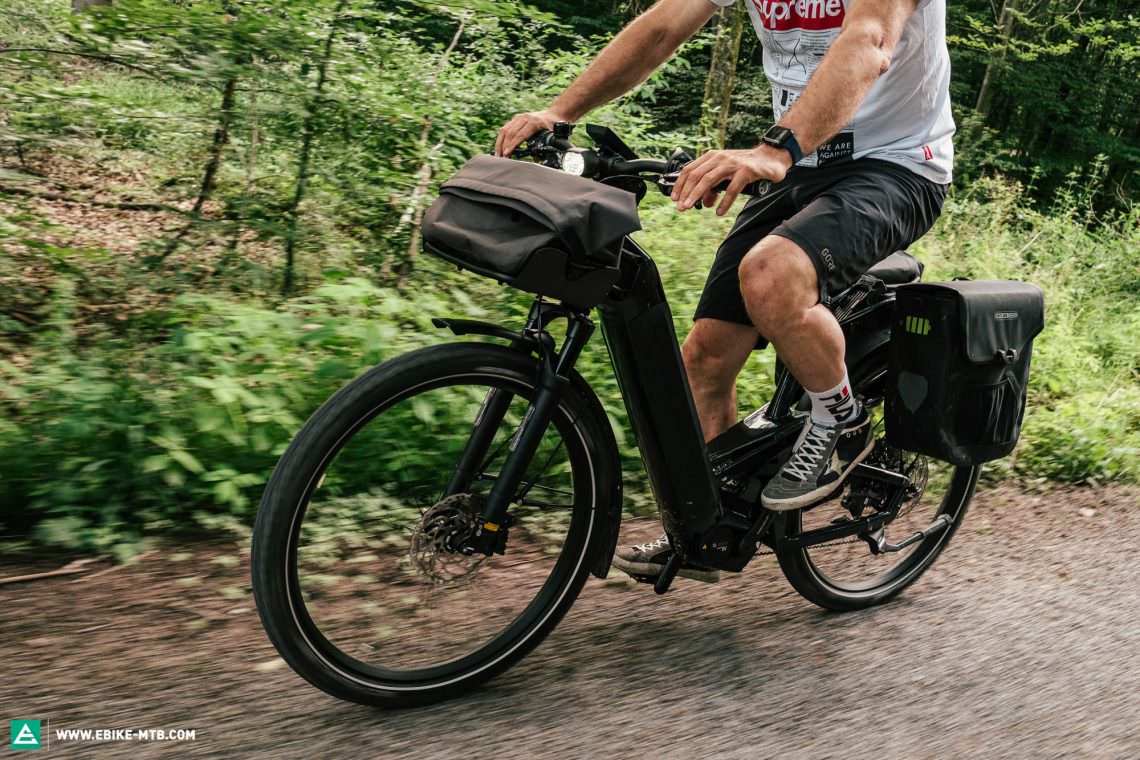
The electrification of trekking bikes has completely failed for over a decade, increasing the risk of buying the wrong bike!”
As we made clear in “The End of an Era”, available in E-MOUNTAINBIKE issue #025, we need to rethink the way we transfer the requirements of classic trekking bikes to the world of ebikes. This includes adapted geometries for improved stability, more durable components and reworked suspension for increased comfort, all combined with smart and functional accessories. Some manufacturers have started to understand this, developing bikes that no longer adhere to the outdated concept of a hardtail with skinny, semi-slick 700 C tires and a short-travel fork but based on the actual requirements of riders instead and making full use of the advantages offered by modern eMTBs. However, just because there are bikes like this on the market doesn’t mean that your local dealer will advise you accordingly and, unfortunately, you might end up buying the wrong bike anyway. As such, we’re also calling on trade and industry to rethink their approach, especially in marketing and sales. We can’t have expensive E-trekking bikes being sold that are significantly worse and less versatile than what the market has to offer!

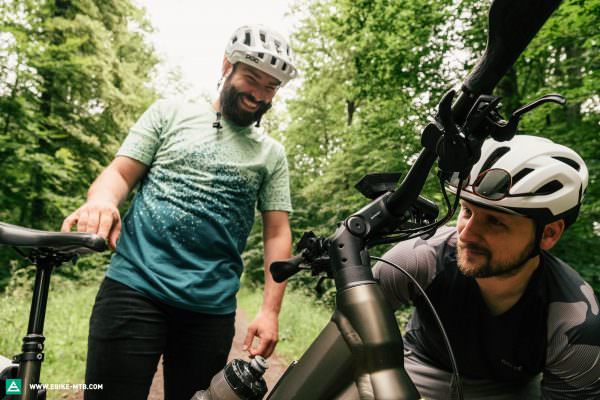
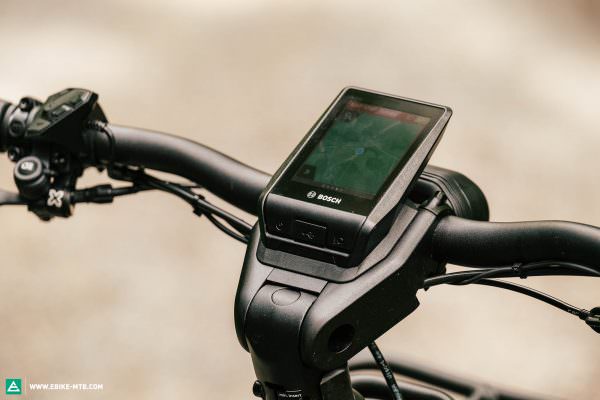
What do modern E-trekking bikes have to be capable of?
Current E-trekking bikes and eMTBs for trekking are super versatile and some of them are state-of-the-art. The best of them are true all-rounders that offer intuitive and good-natured handling, instilling you with confidence in the city, on bike, forest, meadow and gravel paths, as well as on off-road terrain. To do so, they occasionally have to combine seemingly opposite characteristics, treading a fine line where it’s crucial to find the perfect balance between comfort, safety, stability, usability, features, range and precision. Good trekking ebikes should be agile enough with and without luggage to put a grin on your face as you ride though winding alleys, with a relaxed riding position that remains comfortable on long rides and composed handling at all speeds. Reliable components and a sturdy frame are essential. The concepts should be rounded off with modern-looking designs, suitable geometries and exciting everyday concepts.
The new generation of E-trekking bikes are true all-rounders! Whether off-road or on-road, with or without luggage, on long journeys or commuting, the best of them can do it all.”
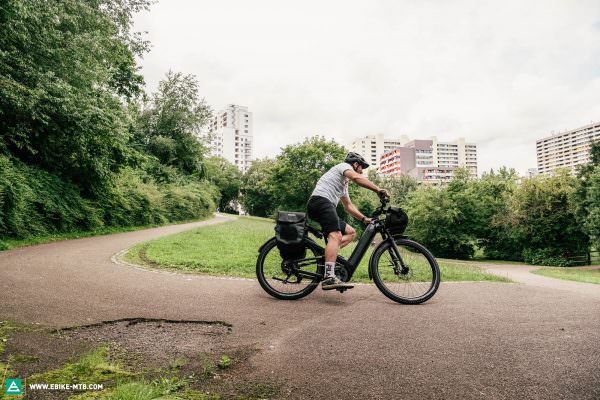

Handling is just as important when the bike is fully loaded with luggage on the rack, so you can tackle multi-day tours or run errands without compromising stability. If hauling luggage has too big of an impact on the bike’s handling, riders can quickly become overwhelmed. This doesn’t only affect the amount of fun you’ll have but also poses a safety risk. On top of that, connectivity features such as simple and intuitive navigation contribute to your overall experience on the bike and can decide between frustration and enjoyment. For many, trekking also means adventure, discovering new places, meeting new people, having fun and experiencing the freedom to explore. As such, you’re likely to find yourself on new and unknown paths that you didn’t plan to ride. The best modern E-trekking bikes or trekking optimised eMTBs are equipped for this, making the most of your adventures even when you head onto moderate off-road terrain and easy singletrack. The accessories and components specced should be of suitably high quality and tailored to the versatility of these bikes.

The test field and the different trekking concepts in our ebike group test
When selecting the bikes for this group test, we made sure to represent the vast range of different concepts available for trekking, bike tours and everyday use. This allows us to explain the different use cases, type-specific features and general possibilities of the different approaches, giving you a holistic picture.
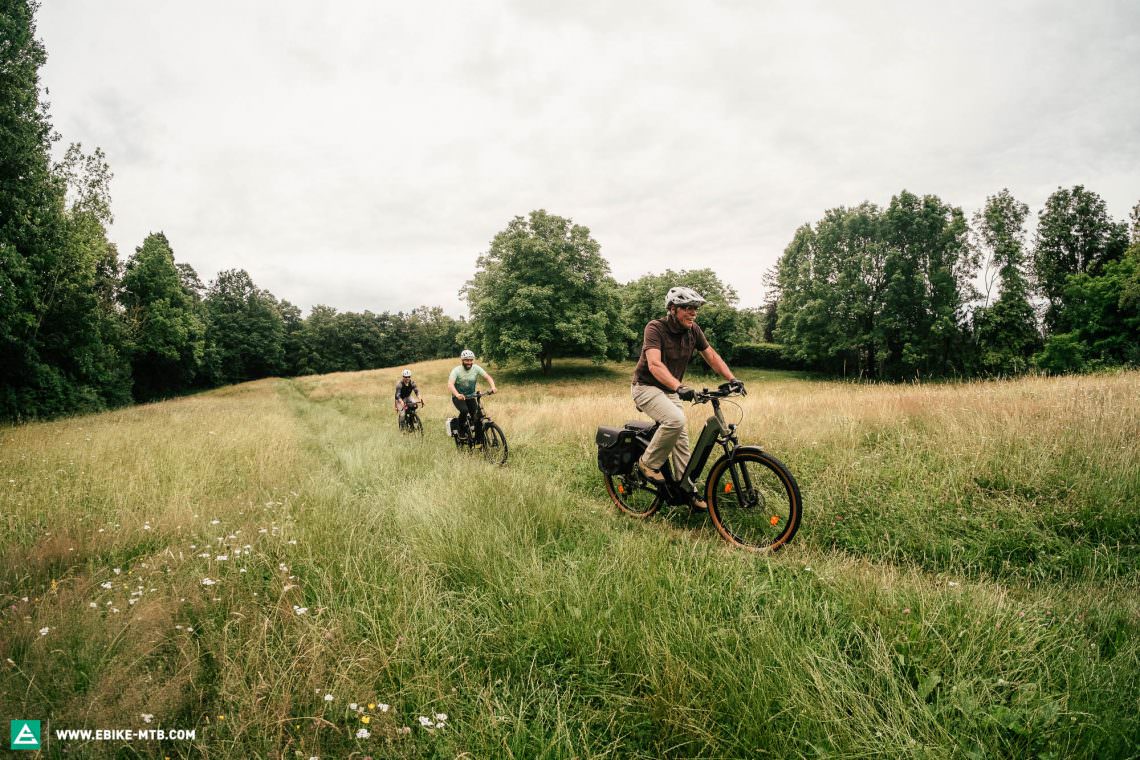
We had 8 bikes and a total of four different, partly novel concepts go head to head to help you make the best decision when buying a modern E-trekking bike. You think comparing step-throughs with E-gravel bikes and eMTBs seems unfair? It’s not! On the contrary, every rider has different requirements and capabilities. And that’s exactly what we want to show in this group test! After all, it’s about finding the best bike for you and your personal needs. Sometimes you have to look outside the box to see what’s possible and what makes sense. Below, we’ll take a detailed look at the concepts and bikes on test.

The E-trekking bikes, eMTBs and E-gravel bikes on test
The classic – A diamond shaped hardtail frame
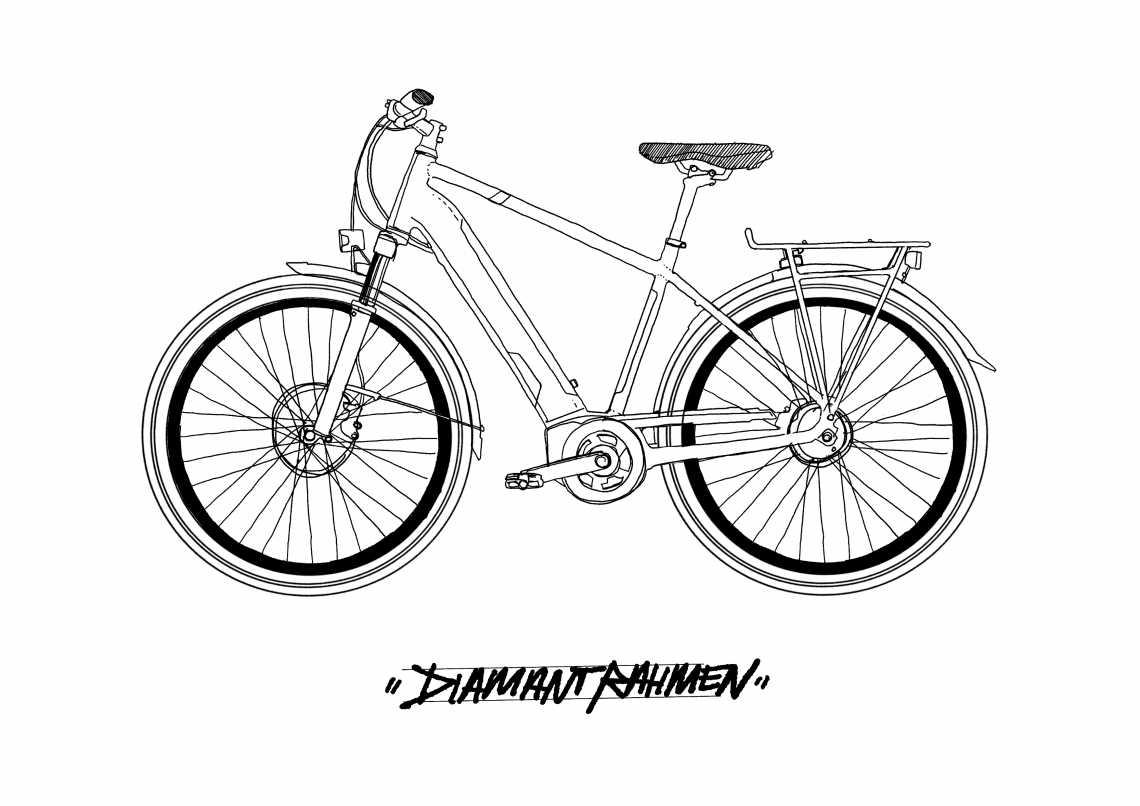
E-Trekking hardtails don’t have suspension at the rear. Apart from the price, there’s nothing that speaks for hardtails in terms of comfort and traction for ambitious off-road use. On the other hand, for trekking, commuting and touring, E-hardtails can be a sensible, usually more affordable alternative to a full-suspension model if you mainly stick to paved surfaces. To compensate for the lack of suspension and comfort at the rear, we recommend fitting high-volume tires. A suspended seat post can also offer significantly improved comfort. Representing this category in the test field is the Greyp T5.2.
The new generation – Off-road step-throughs
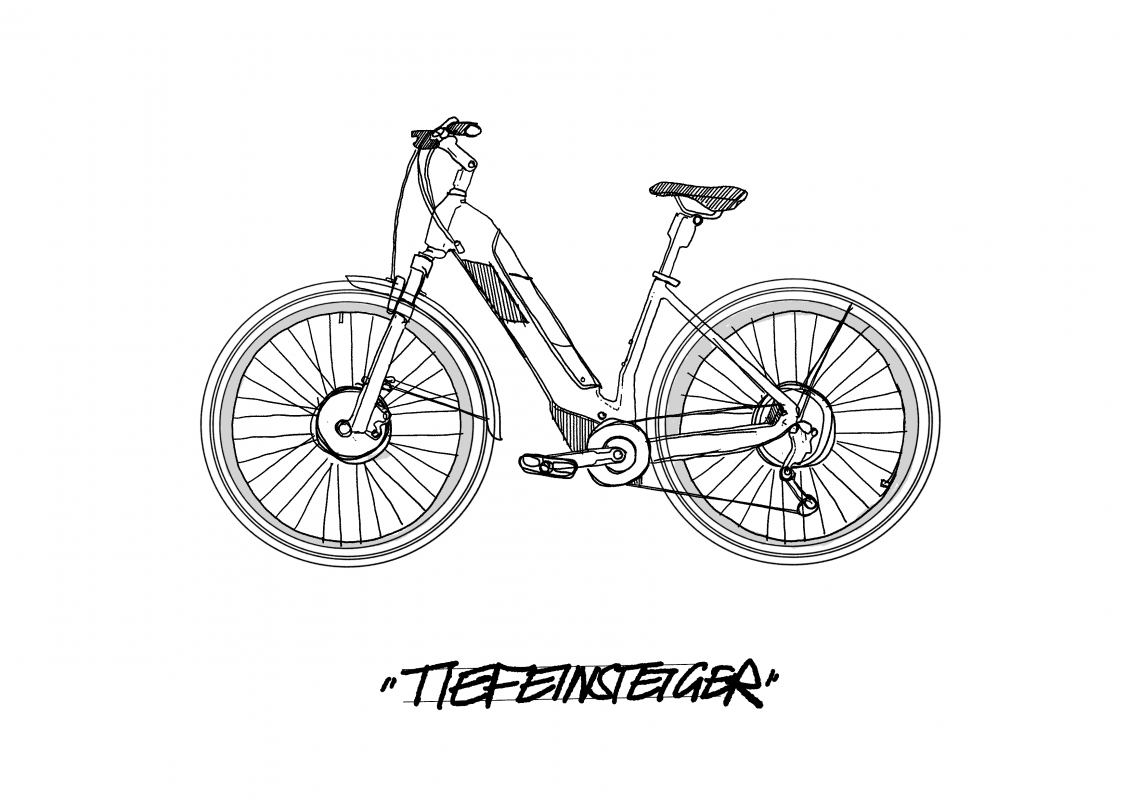
Off-road step-throughs are modern and some even revolutionary. The sales figures of these are rightly going through the roof. They’re able to bridge generations and combine different types of riding like hardly any other category of bike, apart from being masterpieces of engineering. They have to handle like a hardtail or full-suspension bike, though without a top tube, which is a big challenge. Forget the cliché that step-through bikes are for grandmas! The new generation of step-through eMTBs make getting on and off the bike a lot easier, allowing you to experience the joy of riding an eMTB despite injuries, limited physical flexibility or old age. Of course, that doesn’t mean you can’t ride them just because you think they look cool. This category is represented by three different bikes in the test field. CENTURION sent us the second generation of the winner from our off-road step-through group test, the CENTURION Country R2600i. Kalkhoff are represented by the Entice 5 Advanced+, which, with its notably high payload of 144 kg, should be interesting to heavier riders or those who plan to haul a lot of luggage. Riese & Müller take on the competition with their revolutionary full-suspension off-road step-through design, the Homage, promising to take step-through comfort to the next level with rear suspension.
Full-suspension eMTB
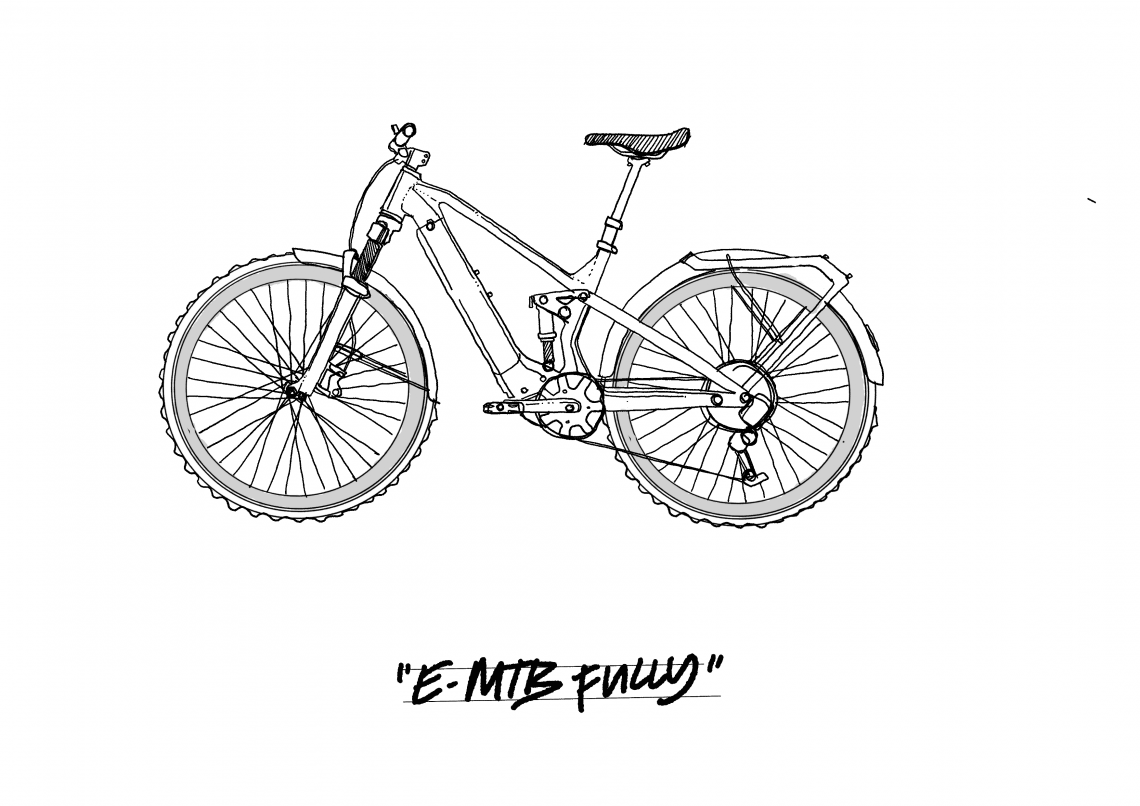
Trekking eMTBs rely on front and rear suspension, just like their hard-hitting counterparts. Doing so not only increases comfort and traction but also allows riders to tackle moderate off-road terrain. Different manufacturers have different approaches to how they blend aggressive eMTBs with the requirements of modern full-suspension E-trekking bikes. MERIDA simply take the eONE FORTY, which was originally designed for trail riding, and equip it with mudguards, a rear rack and stand to expand its scope to trekking. With the Goroc3 6.50, FLYER also sent a bike that exudes a lot of mountain bike DNA in the hopes that it’ll come out on top as the best trekking all-rounder. Trek have taken a different approach and developed their trekking eMTB from the ground up. The riding position, suspension, geometry and comfort of the Trek Powerfly FS 9 EQ have been designed specifically for both trekking and light trail use.
E-gravel bike – Adventure bike with drop bars
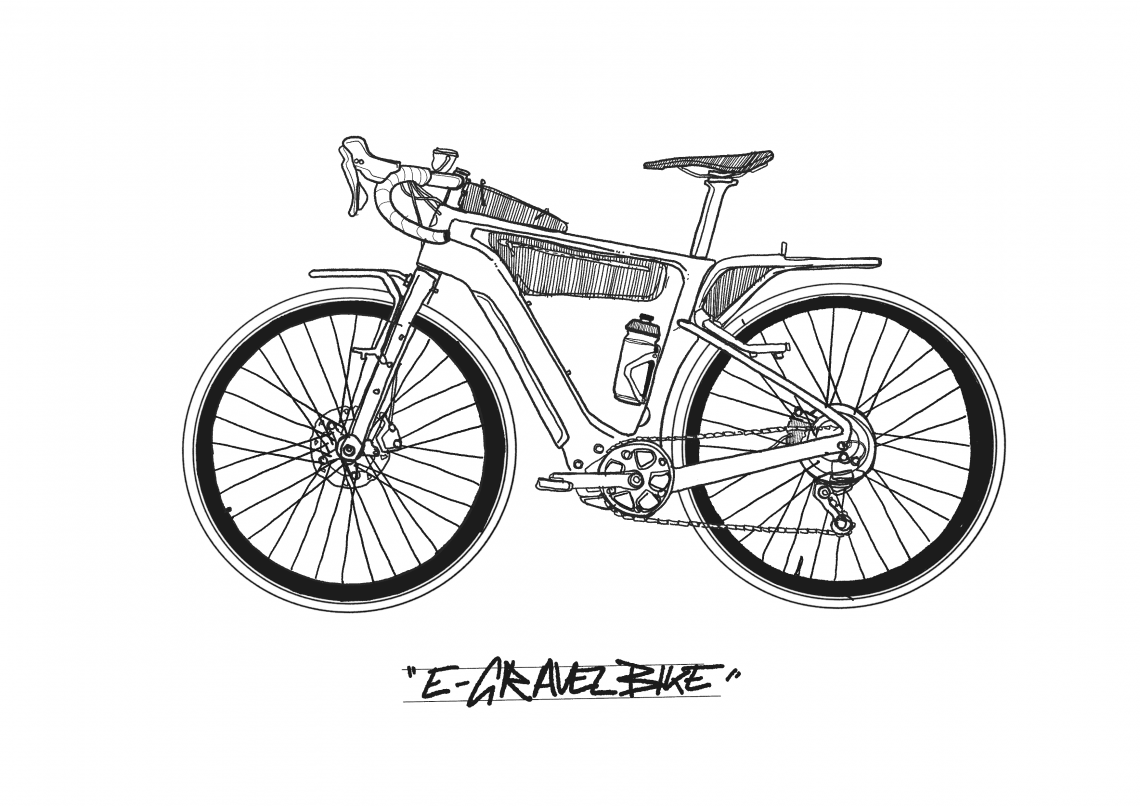
E-gravel bikes can be another exciting alternative to classic E-trekking bikes. They’re usually lighter than trekking bikes and are introducing the motorised segment to a trend that you might be familiar with from the analogue gravel scene. Friends of drop handlebars have a slightly different take on trekking, which they refer to as bikepacking, combining the competitive nature of road and gravel rides with adventure, loaded touring and often overnight stays in the outdoors. Drop handlebars give you several different hand positions, allowing you to switch up your position on extended rides. However, they typically don’t have suspension, as you’ll see on the Niner RLT e9 RDO in this test. That said, a well-designed and built E-gravel bike manages to mitigate bumps and vibrations to some extent via flex in the frame and well-matched components. The only E-gravel bike in the test field also takes a different approach to transporting luggage. Purpose-made bags can be strapped to the handlebar, into the front triangle and to the rigid fork legs, thereby balancing out the weight distribution.
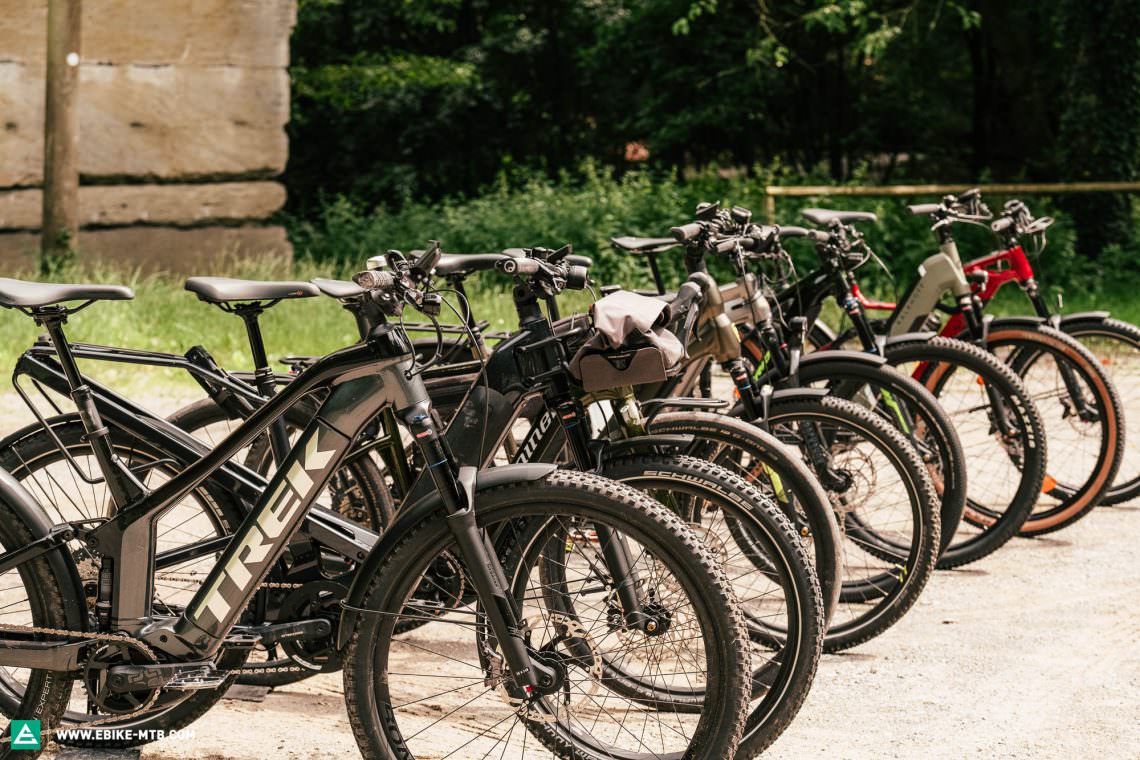
| Bike | Price | Weight | Motor/Battery | Everyday accessorie |
|---|---|---|---|---|
| CENTURION Country R2600i | € 4,199 | 26.60 kg | Bosch Performance Line CX / 625 Wh | yes |
| FLYER Goroc3 6.50 | € 5,699 | 27.04 kg | Bosch Performance Line CX / 625 Wh | yes |
| Greyp T5.2 | € 5,500 | 26.80 kg | MPF 6.0c / 700 Wh | yes |
| Kalkhoff Entice 5.B Advanced + | € 4,099 | 25.90 kg | Bosch Performance Line CX / 625 Wh | yes |
| MERIDA eONE-FORTY EQ | € 4,799 | 25.24 kg | Shimano EP8 / 630 Wh (504 Wh in S) | yes |
| Niner RLT e9 RDO | € 6,299 | 17.55 kg | Bosch Performance Line CX / 500 Wh | No fenders, no stand |
| Riese & Müller Homage GT Touring | € 8,018 | 34.10 kg | Bosch Performance Line CX / 1.250 Wh | yes |
| Trek Powerfly FS 9 Equipped | € 6,999 | 27.10 kg | Bosch Performance Line CX / 625 Wh | yes |
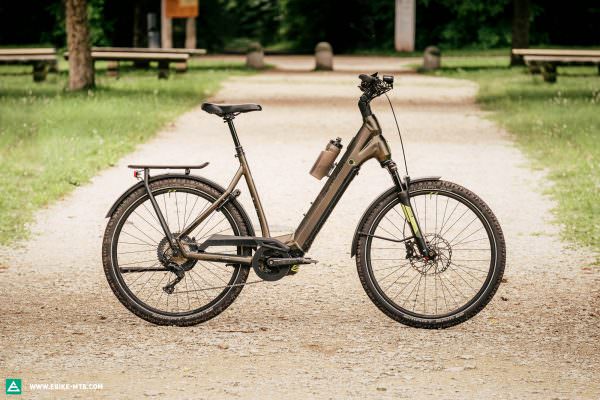
26.6 kg, size L | € 4,199 | Click for review
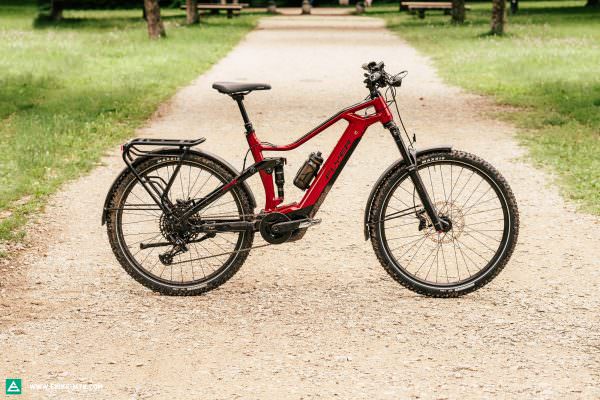
27.04 kg, size L | € 5,699 | Click for review
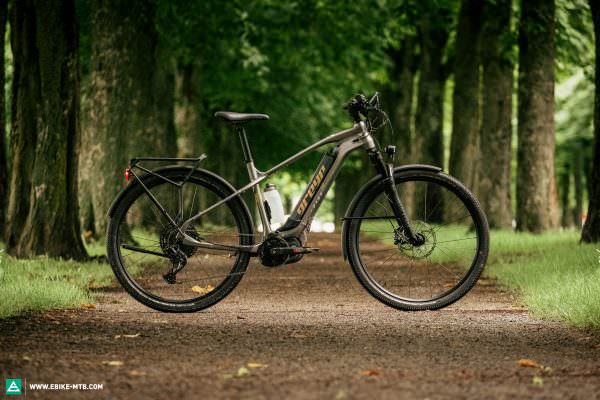
26.8 kg, size L | € 5,500 | Click for review
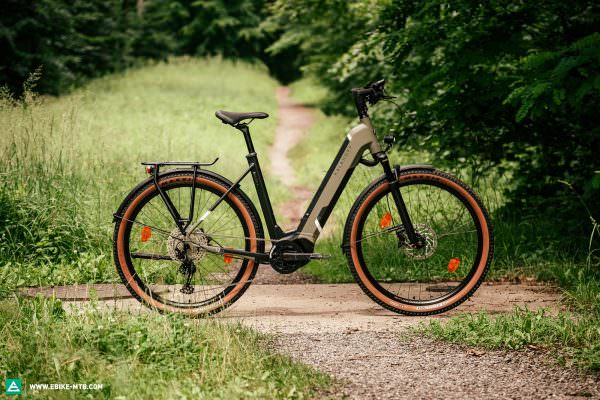
25.9 kg, size L | € 4,099 | Click for review
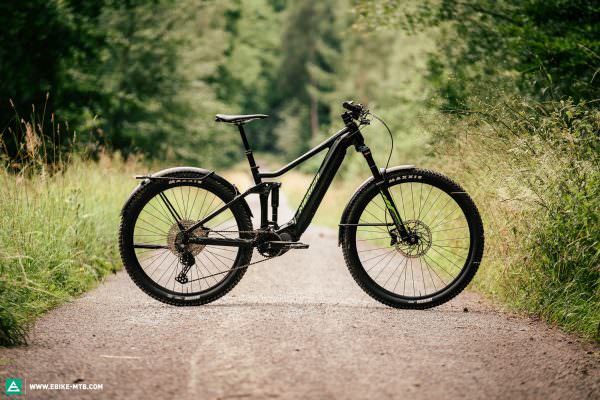
25.24 kg, size M | € 4,799 | Click for review

17.55 kg, size 56 | € 6,299 | Click for review

34.1 kg, size L | € 8,018 | Click for review
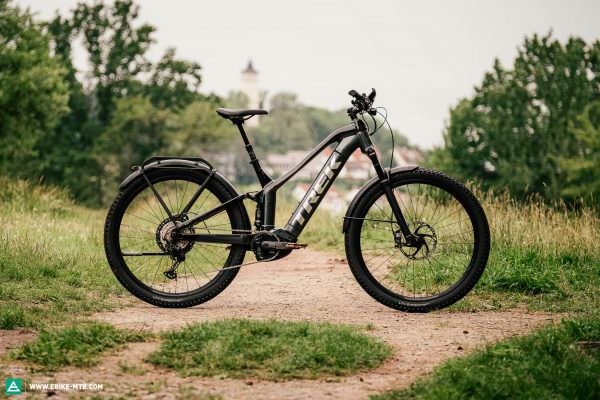
27.1 kg, size L | € 6,999 | Click for review
Why aren’t Haibike, GIANT and Moustache included?
The selection of E-trekking bikes on the market is huge but, on closer inspection, it becomes clear that not all of them have the potential to be good bikes for modern trekking use. Some of the factors limiting many of the models you’ll currently find on the shop floor include a high centre of gravity due to the position of the battery, components that aren’t robust enough and a lack of any concessions towards comfort. Apart from that, the delivery problems you’re currently experiencing also affect us. Unfortunately, Haibike, GIANT and Moustache didn’t have the requested models available during the test period. Prophete and newcomer HoheAcht didn’t have the bikes we wanted ready in time for the test period either.

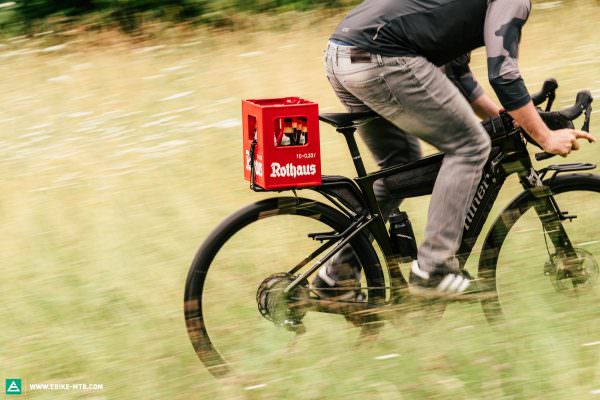
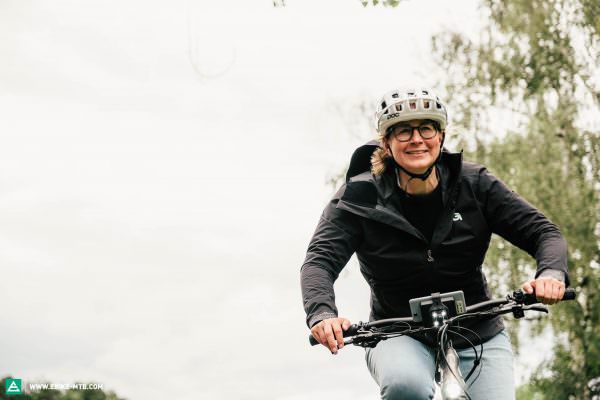
Who tested the E-trekking bikes and how?
Real-world handling in all weather and on different terrain always trumps Excel spreadsheets, specs and lab measurements, which is why we drew our conclusion actually heading out on tours. We tested all the bikes around our headquarters in Stuttgart on our daily commutes, on varied short routes and on longer journeys. We explored the limits of every bike, on and off-road, with and without luggage on asphalt, gravel, meadow and forest paths. The bikes also had to prove themselves on their occasional detours along easy trails. We had a lot of fun with everything from relaxed cruising to steep climbs, experiencing flow, enjoying delicious Swabian ravioli, good espresso and crisp, refreshing beer. We switched to explorer mode and rediscovered our hometown, not to mention all the interesting insights we gained along the way. Spoiler: some bikes can’t even handle 10 kg of luggage on the rack.
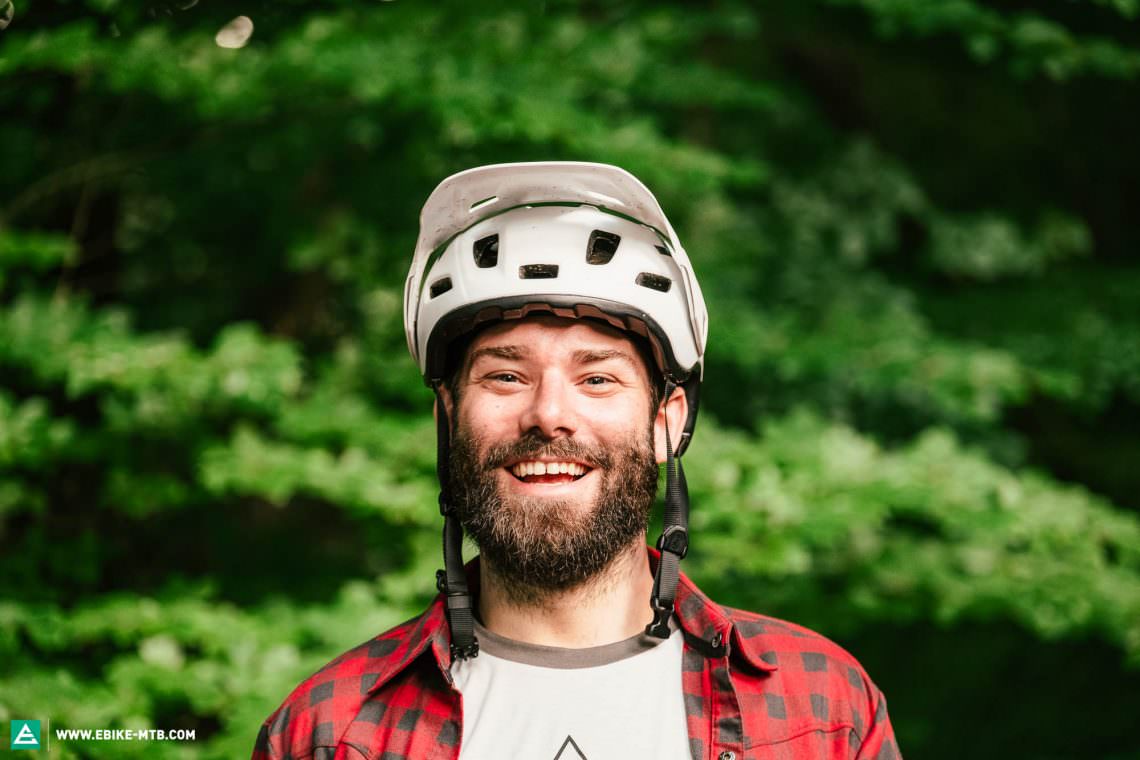
“It’s amazing how different bikes can be while all claiming to be the same thing. This test showed beyond a doubt that not all E-trekking bikes are equal. It all comes down to the details. The right eMTB will often be the better choice.”
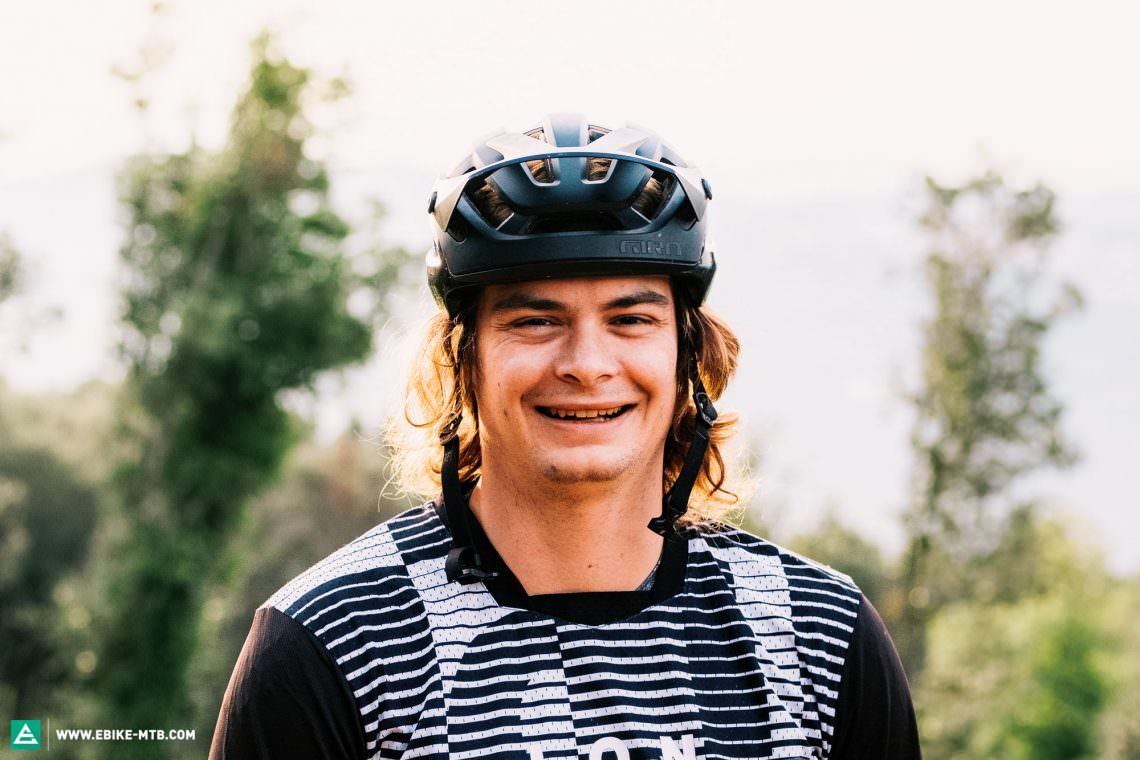
“I test over 100 bikes a year and bring a lot of knowledge from the performance-oriented eMTB scene. Good adjustability and a sensible overall concept are the key to a good trekking ebike. It’s here that the models on test differ so much. Some of the concepts are consistently well thought out while others are less convincing. Trek show how it’s done with the Powerfly FS 9 Equipped.”
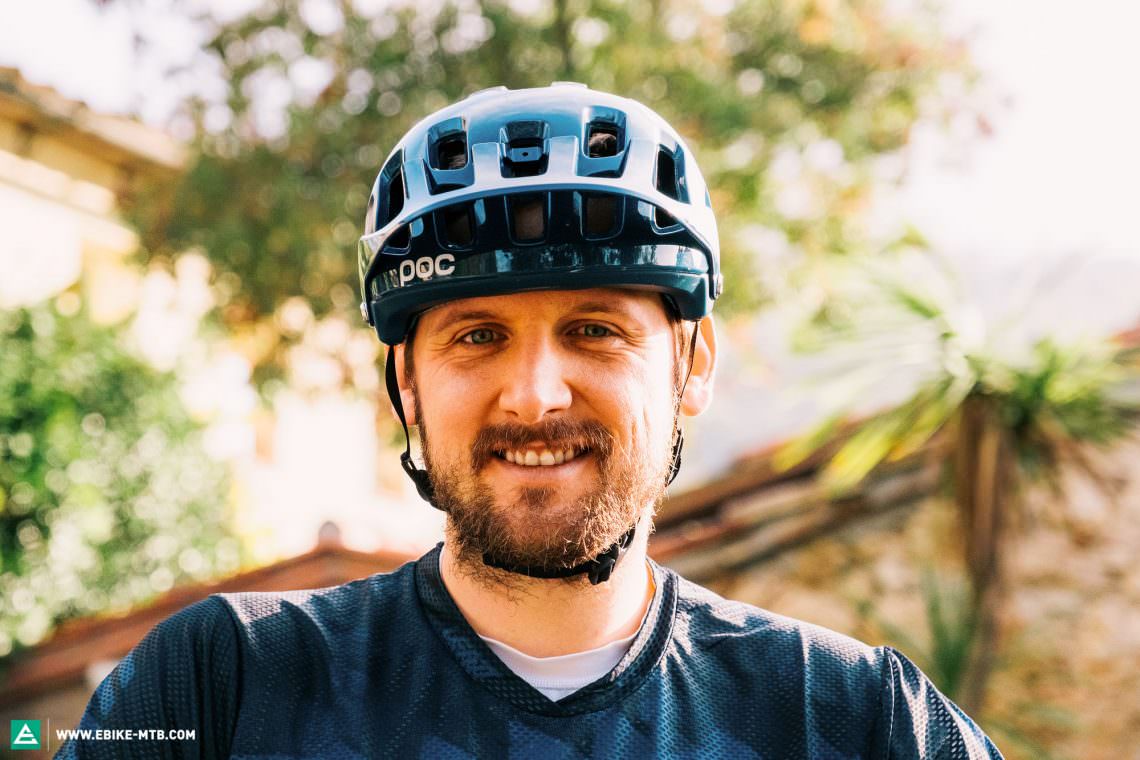
“Software is just as important as hardware! Individual motor settings, range-based navigation, theft protection and connectivity with external digital platforms are benefits that make bikes smarter, more versatile and simply better. Riese & Müller and Greyp show what’s possible and are both pioneers in the field.”
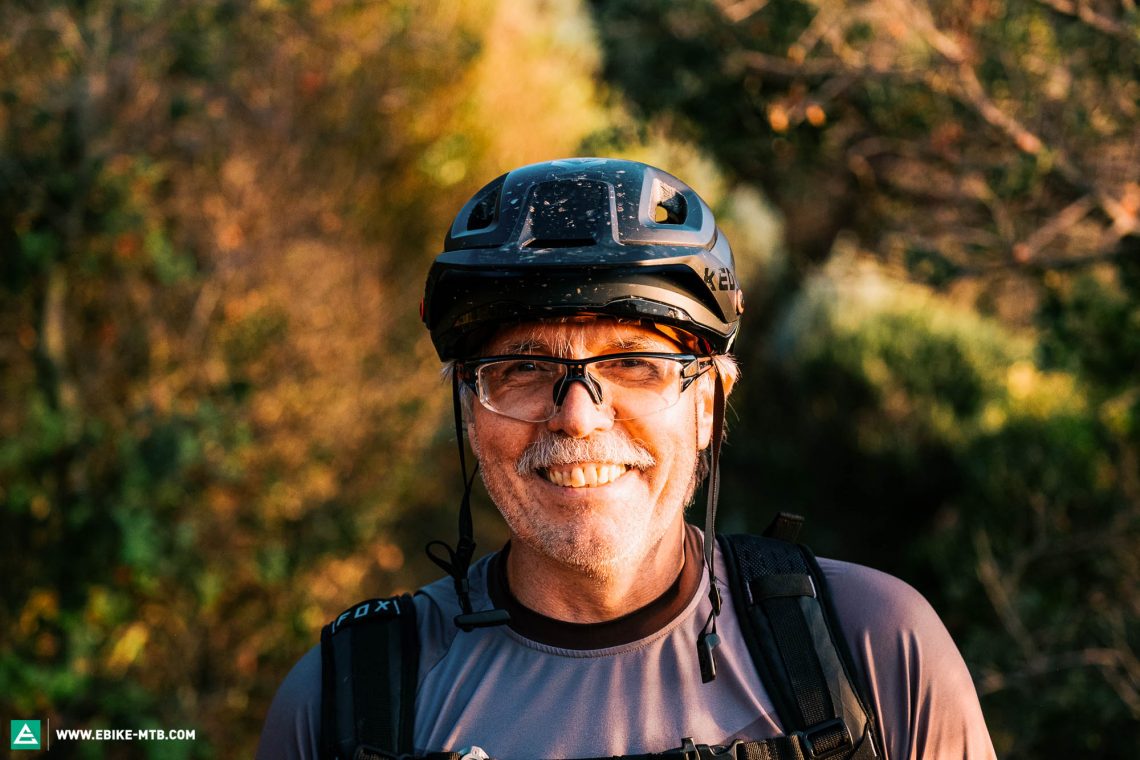
“I use an eMTB to commute on- and off-road and often tow a trailer for my dog Henry who hates being left at home when I head into the E-MOUNTAINBIKE office. The trekking ebikes on test are almost all approved to pull trailers, which is good both for me and for families with young children. But only if they can handle the payload. When I’m riding with my buddies and not pulling a trailer, I want good-natured handling and a comfortable ride. My favourite: the CENTURION.”

“I commute on my eMTB all year round, both on moderate trails and bike paths. Good lights, a comfortable riding position and the feeling of the motor at the 25 km/h threshold are just as important to me as the handling with luggage for those long off-road tours at the weekend.”
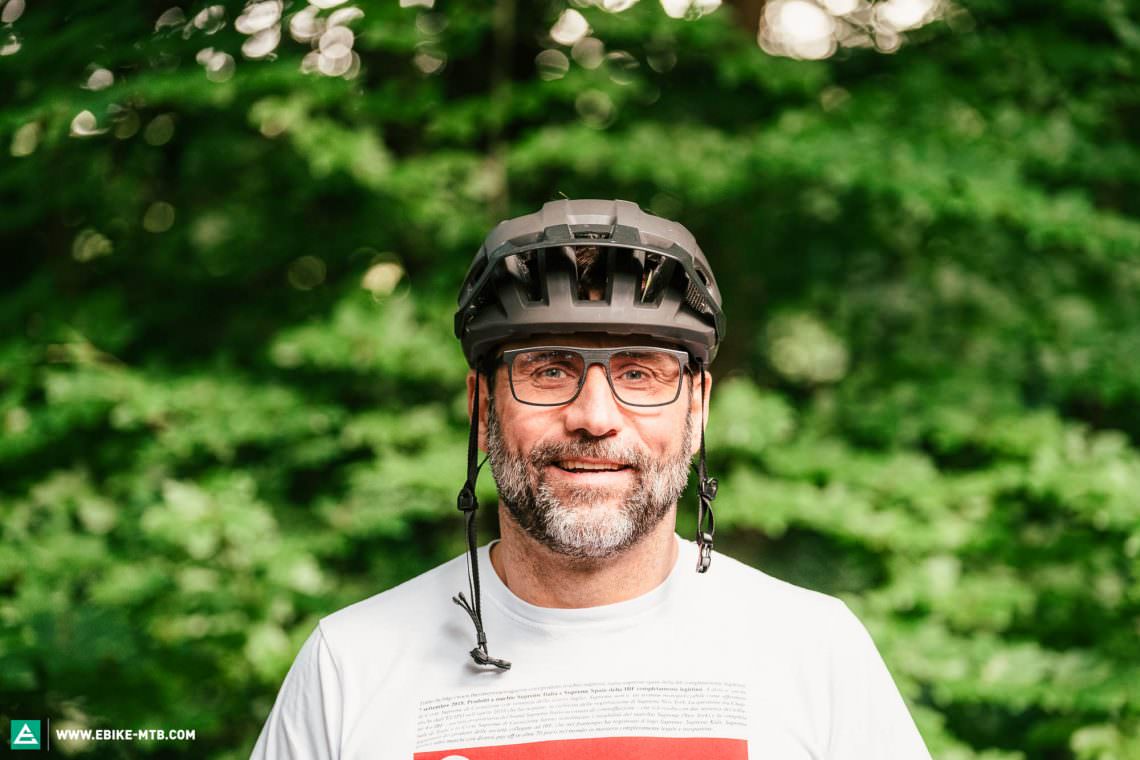
“I am positively surprised by the design and look of most of the bikes on test. Some of them are true eye-catchers! I was equally surprised to find that some bikes are completely overwhelmed with a rider weight of around 90 kg and an additional 10 kg of luggage despite a high permissible payload. My favourite is the Riese & Müller because the luggage is suspended along with the rider, so it has little influence on the handling.”
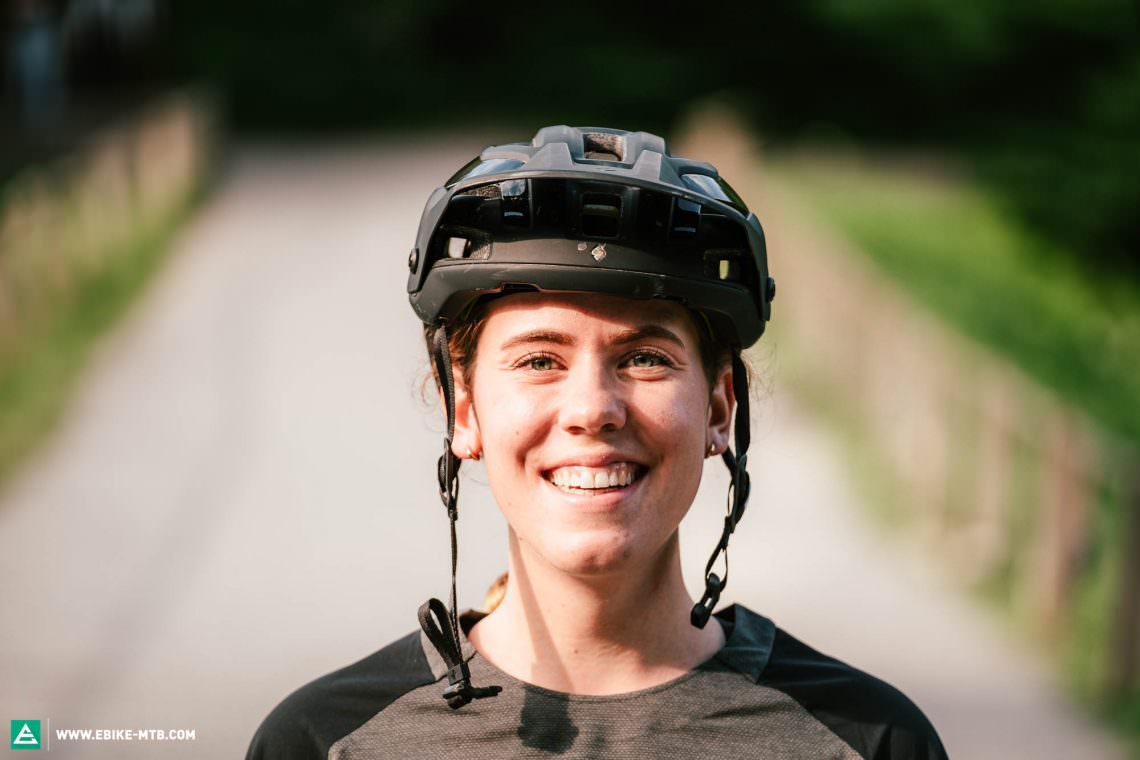
“I am light and petite. Since I park my bike in the basement and remove the battery to charge it inside, I want a light bike with an easily removable battery. Many of the bikes on test are simply too heavy for me. I was won over by the sporty and light Niner with its drop handlebar.”
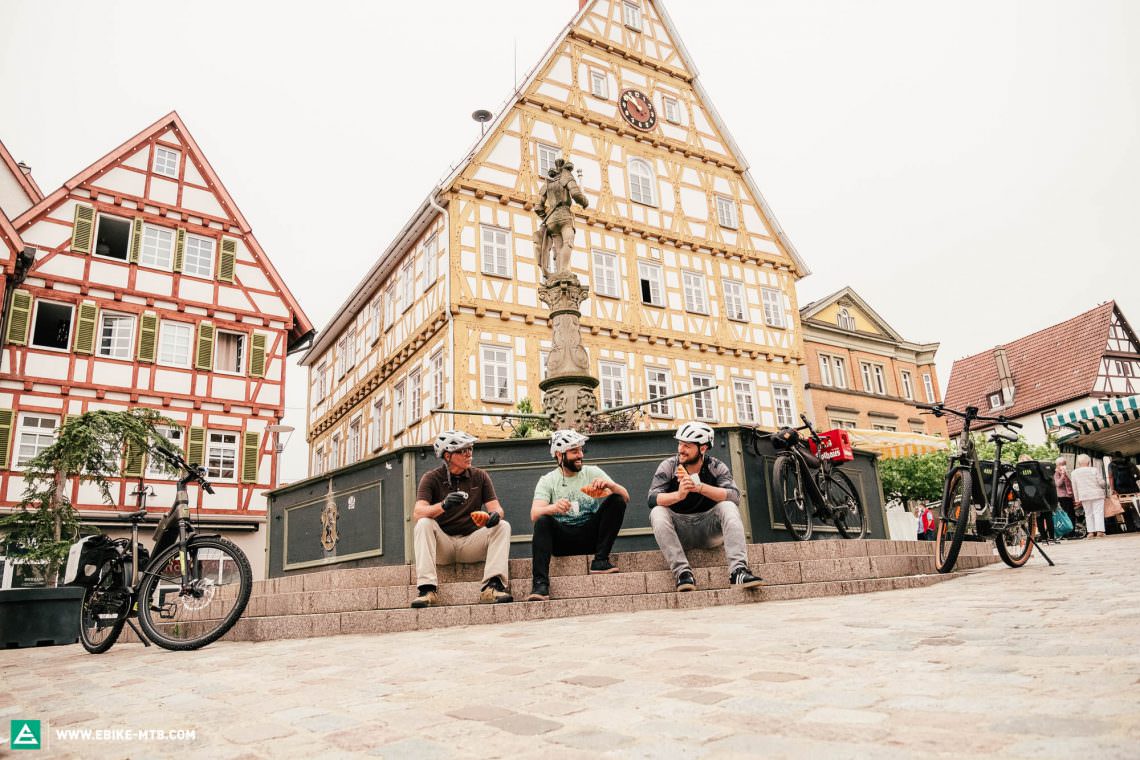
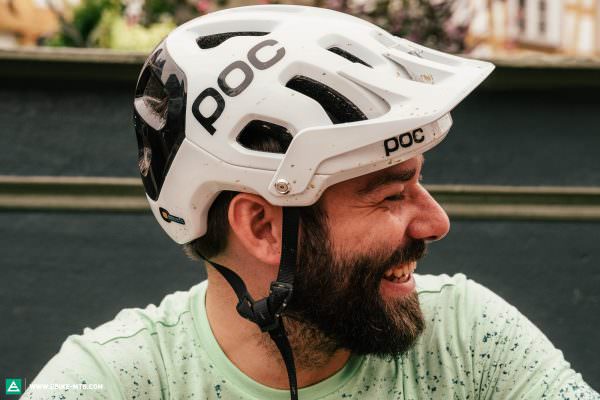


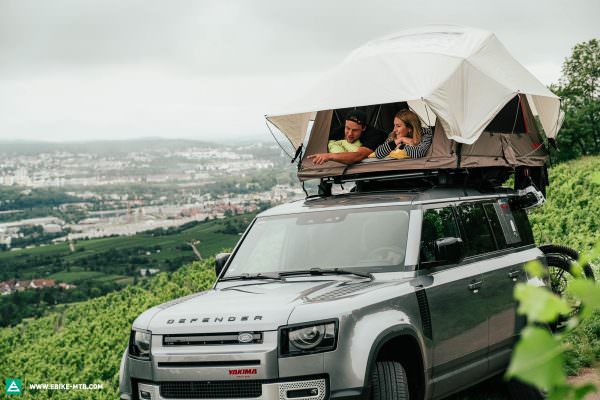
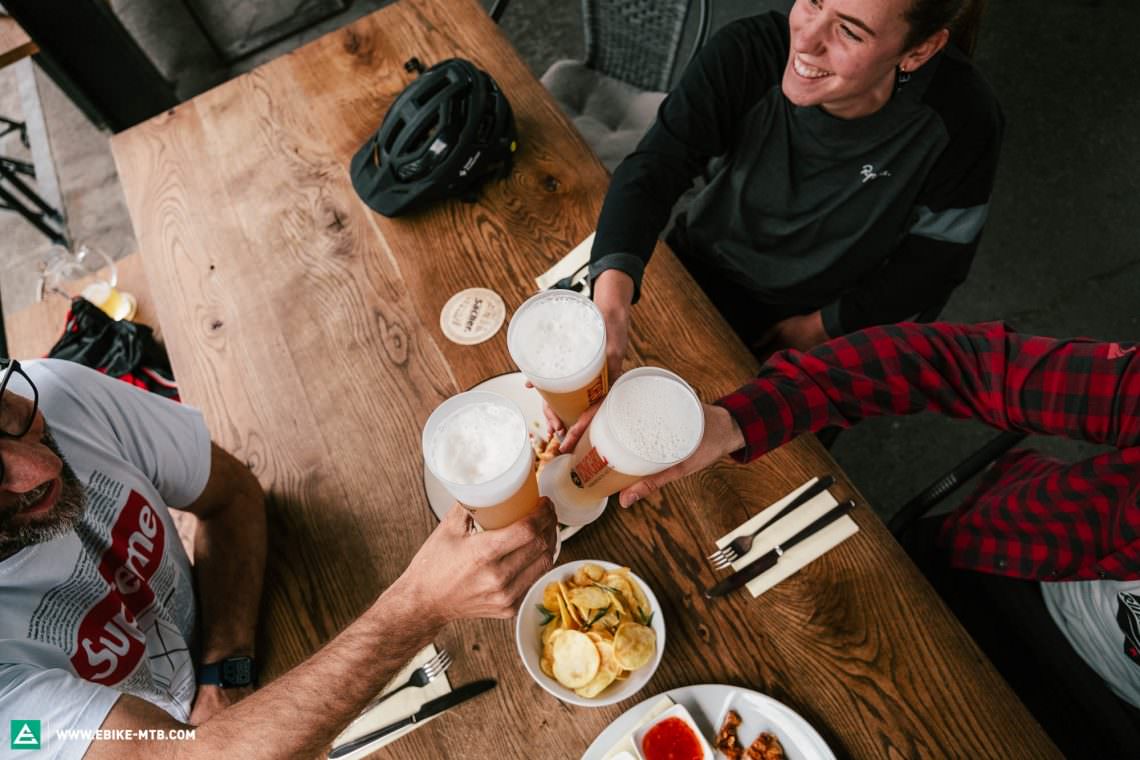
What counts on an E-trekking bike? The most important buying criteria
To avoid any nasty surprises, you should think carefully about what you’re going to use your trekking ebike for and what your priorities are. The details can make all the difference. This section is about the potential of modern ebikes, their possibilities and the questions to ask yourself before buying.

Do you want a navigation device when you go riding? How heavy are you and are you even allowed to ride your dream bike without exceeding the maximum permissible weight limit? Do you really need a battery capacity of 1000 Wh or more? Below, we cover the most important criteria to consider before buying an E-trekking bike, allowing you to make the best, most informed decision. Additionally, we will tell you what other important questions to ask to achieve trekking bike happiness. Equipped with the knowledge from this group test, we promise that you’ll be able to answer every single one of them.
E-trekking bikes have more sex appeal than ever before, with contemporary looks and excellent workmanship, mostly…
The times when trekking ebikes were boring and exuded the charm of a prefabricated housing estate from the 70s are over! Developments from the eMTB scene are trickling down into the trekking segment and fuelling it with sex appeal. Elegantly proportioned frames with clean lines and matching paintwork, neat cable routing, clever motor and battery integration and a corresponding level of workmanship are giving them a new lease on life. That said, this isn’t the case with all of them. If you look at the cockpits of the bikes on test, you’ll immediately notice which manufacturers have given thought to cable management and looks and which didn’t bother neatening up the cables for the lights, display, remote, shifters and brakes.
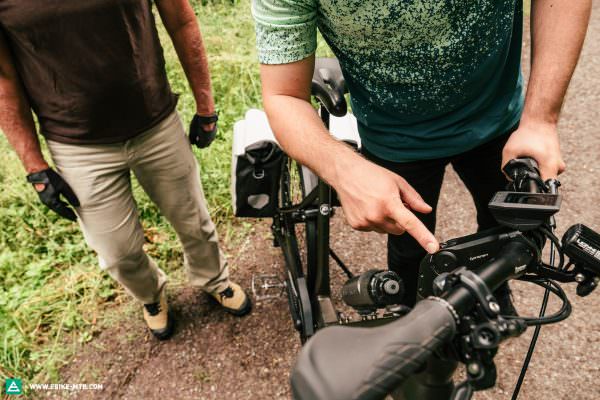
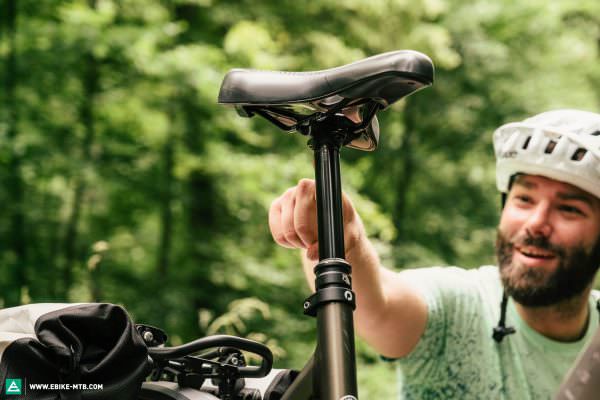
How, where and when do you ride? The accessories should match your needs
When it comes to accessories and the overall concept of the respective bike, we asked ourselves the same questions that you should ask. What do you intend to use your E-trekking bike for? Do the accessories or lack thereof limit the bike’s real world applications or do they offer more than what you actually intend for the bike? Do you need lights that allow you to see while riding at night or do you merely need to be seen? Are you looking for the one bike that can do it all? In that case, you’ll want too much versatility, off-road capabilities and reserves, rather than too little.
Knobby and voluminous tires that have been designed for a wide range of applications, like those on the Trek Powerfly FS 9 Equipped, not only perform well on trails but also on gravel and asphalt. A dropper post is not a high-tech eMTB gimmick either, allowing you to get on and off the bike more easily and increasing freedom of movement off-road, offering real benefits in all situations. It also gives you the ability to quickly adjust the saddle height to suit different riders, which is very convenient for households that share a bike. A dropper post with integrated suspension like the one on the CENTURION Country R2600i is even better, especially on a hardtail where it can offer a much needed boost to comfort. When it comes to the brakes and drivetrain, almost all the bikes we tested rely on eMTB technology. For good reason. More than just stopping power, you also need modulation. While some of you might have to get used to it, everyone benefits from single-finger brake levers in combination with powerful brakes. What about general adjustability? Is it easy to adjust the riding position and the height and reach of the handlebar, or are you stuck with the way the bike comes off the shop floor? Even if you try to avoid riding in the rain, you can always be surprised by a downpour. Will the mudguards keep you dry or are they too short to be effective?
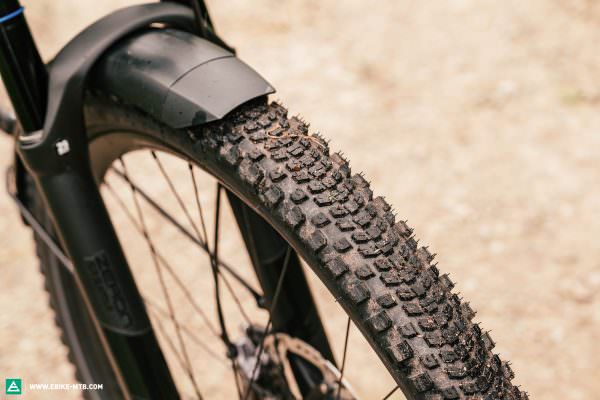
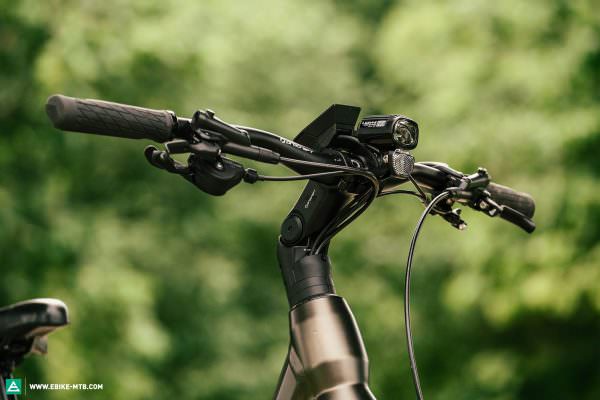
Battery and battery concept – Is range everything?
First of all, if you’re wondering which ebike on test has the biggest range, we have to disappoint you. There’s no simple answer to this question as range doesn’t just depend on the size of the battery. Alongside the power consumption, efficiency and performance of the motor, around 20 other variables such as riding style, rider weight, temperature and altitude also influence your range. As such, there’s no way to compare the range of the different ebikes on test in a meaningful way. There’s also no general answer to the question of how far you can ride with a single charge. It could be anywhere between 20 and 100 km. Absolute facts don’t correspond to reality and would simply be wrong. If you’re interested to dig a little deeper into this topic, we recommend reading our article on the truth about lab tests.
Regarding battery capacity, the following applies: as much as necessary and as little as possible”
The important question is: ”How much battery capacity do you really need?” And the answer is, as much as necessary and as little as possible. More battery capacity invariably means more weight, affecting weight distribution and usually raising the centre of gravity and compromising the bike’s handling and suitability for everyday use. Not to mention the added cost. If you don’t empty your tank, you’re just dragging around unnecessary ballast. Even on long rides, you don’t always need a dual battery solution with a battery capacity of over 1,000 Wh. Using a quick charger during your lunch break can be a good alternative to relying on a huge battery. If you want to read up on eMTB battery concepts, you’ll find everything you need to know on our website.


Everything is connected these days, or is it? – The connectivity, displays, theft protection and navigation functions of the test field
Software plays an increasingly important role on modern ebikes and enriches the ebike experience as a whole. By that we don’t just mean the software of the motor but also additional app-driven features. In some cases, the ebike’s full potential can only be achieved via an app. In this test, we tasked ourselves with trying out all the functionality available and finding out which of them really add value. The simplicity and usability of smart features is crucial. It doesn’t matter how many software functions you have, nobody wants to have to read a manual to be able to use them all, or indeed to activate the theft protection on their bike. The automotive industry has already proven that it can be done intuitively and without much explanation. And that’s how it should be with ebikes. Are you fine with a display like the ones used on ebikes 8 years ago, which are long outdated and have less features than a Nokia 3310? Or would you rather have one with a high-quality feel, great legibility and numerous features that can keep up with the modern devices that we use day to day? If the former applies, you’ll have no problem with the displays in this test. If you belong to the second group, your choices are limited. Similar to the car industry, the question of whether a bike is smart depends on the display and software. The combination of these comprises the bike’s digital heart, determining the quality of its connectivity and navigation features.
While the FLYER and Kalkhoff with the Bosch Intuvia display, the Niner with the Bosch Purion display and the MERIDA with the Shimano SC-E5003 display don’t offer any navigation or connectivity features, the Riese & Müller, Trek and Greyp lead the way with high-tech displays that resemble the command centre of a modern car, or they can turn your smartphone into one. The undisputed champion that sets the standard for the future is the Bosch Nyon. With its intuitive touch display, good integration and numerous features including range-based navigation, it currently sets the bar. It is a next-level on-board computer that combines all the functions you need on a trekking ebike. The Bosch SmartphoneHub on the Trek and the Central Intelligence Module (CIM) on the Greyp, which turn your mobile phone into an intelligent control center, are also able to combine the latest technology and range-based navigation with interesting additional functions. Are they just gadgets? No! These devices relieve you of the effort of route planning, allow you to discover new paths and give you the peace of mind to enjoy your ride. Adventure made easy and stress-free.
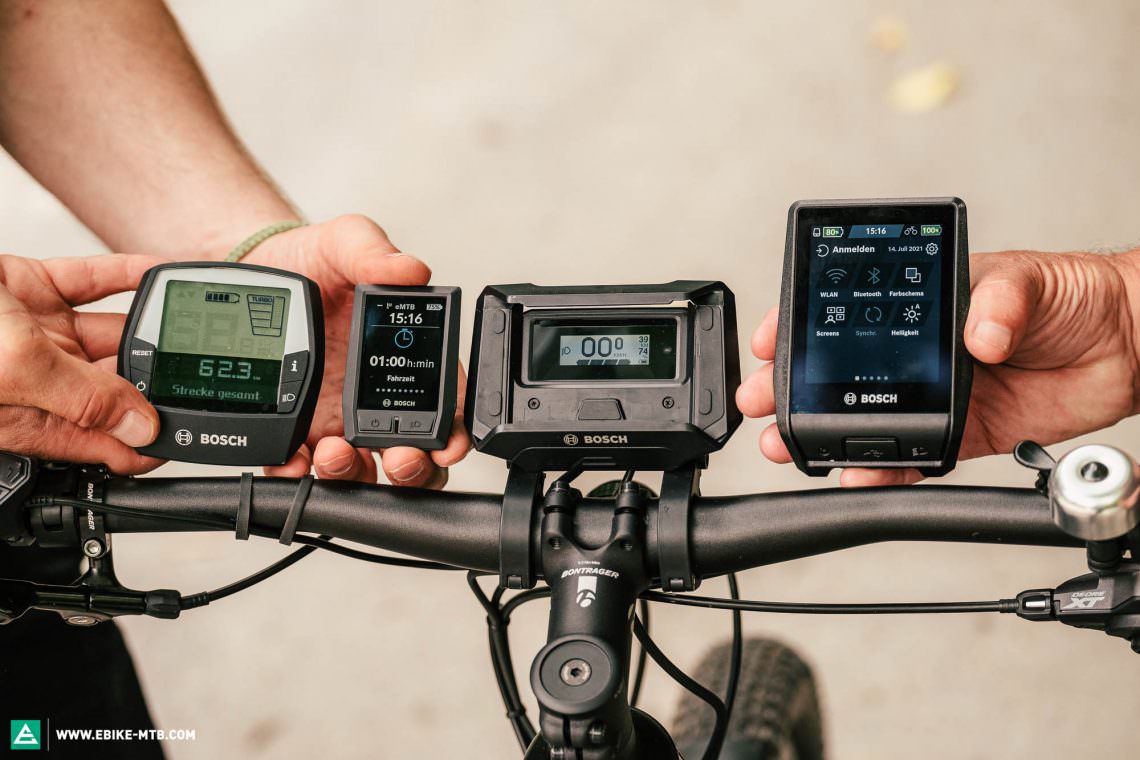
By integrating navigation systems and additional functions into the on-board computer or connecting directly to your smartphone, some bikes take it to the next level.”
Can you simply upgrade the displays to add navigation functionality later?
Yes and no. You have to distinguish between the individual displays and manufacturers. The Intuvia display from Bosch can be easily upgraded to the COBI.Bike system. This turns your smartphone into the command center, with navigation functions available via the COBI.Bike app. In terms of price, it’s the more affordable option at € 229 when compared to upgrading to a current Nyon display for € 349 and you don’t have to take your bike to the dealer to do so. However, it cannot keep up with the Nyon in terms of usability and range of functions. The Kiox display can also be upgraded to the Nyon model without having to visit your dealer. All you need is to change the bracket and plug in the cables. Only when upgrading from the Purion display will all cables have to be replaced, in which case you have to budget for the additional cost of parts and labour.
Shimano don’t offer any navigation functions via their displays. Thanks to an update to the Bluetooth enabled Shimano SC-EM800 display on the MERIDA eONE-FORTY EQ, you can adjust the support levels to suit your individual preferences via a smartphone. You can find out how this works and what advantages it offers here. If you want to find out more about ebike navigation and GPS options, you will find everything you need to know in our navigation special. An external GPS device or smartphone isn’t the most elegant or modern solution, yet it remains the only way to navigate on some ebikes.
The heart of every ebike – The motor
The bikes on test all rely on centrally mounted eMTB motors. Why? Because these are the spearhead of current ebike technology. They have a decisive influence on the ebike experience. The software, motor tuning and power delivery of the Bosch Performance Line CX and Shimano EP8 motors are among the best on the market. Isolated specs such as maximum power and maximum torque offer little information about how the individual motors and bikes really behave. Instead, it all depends on the riding experience and the interplay between software and the hardware. The MPF 6.0c motor on the Greyp can’t keep up with the competition in this regard. It exhibits a noticeable amount of resistance to pedalling and isn’t as refined in the way it engages, the support it offers at low cadences and its power delivery, compared to the aforementioned Bosch and Shimano motors.
Dynamic, progressive support levels such as Bosch’s eMTB mode and Shimano’s Trail mode also make sense on trekking-oriented eMTBs and dedicated E-trekking bikes. They regulate the motor’s output depending on the rider’s input, so that you don’t constantly have to switch back and forth between different support modes. As a result, you’re able to concentrate entirely on the trail ahead and even have to shift gears less frequently. This offers real added value and improved safety, especially for inexperienced riders. Niner and Riese & Müller have chosen to rely on Sport instead of eMTB mode, but we’d suggest you let your dealer install eMTB mode for you.
The new Tour+ mode for Bosch Performance Line CX motors and the eMTB Light mode on the Trek work on a similar principle. They’re also progressive but require more input from the rider than eMTB mode. This a great option on flat terrain or to save battery power.

Regarding the ebike motor, the ride feel and software are more important than just the maximum output.”
For more information on all relevant eMTB motors, check out our motor group test of the 8 most important models.

Handling – How do the bikes ride with and without luggage?
Unfortunately, many customers still get dazzled by high-end components and isolated performance figures when buying an ebike. But a bike with a powerful motor can still be difficult to ride uphill. A bike’s handling can’t be assessed adequately by looking at figures on a sheet of paper or on your screen. Especially not when riding with luggage. It frequently happens that customers aren’t satisfied with their purchase because the handling doesn’t meet their expectations, making the bike a chore to ride.
Does the grip, tread and feel of the tires match the intended use? What surfaces do you mainly ride on? How does the bike behave when riding over curbs, through potholes and over small bumps? Does it just roll over obstacles or is it difficult to control? How does the ebike cope at higher speeds? How does the handling change when you’ve got weight on the rack? A balanced weight distribution improves the handling and can instil you with confidence, offering a greater feeling of safety on the bike. It’s vital to find out whether the character of a bike suits you in advance and if it’s able to deliver what the manufacturer promises in its marketing slogans. Only those who are properly informed can make the right decision and avoid buyer’s remorse. For this reason, the above questions form a central part of every bike review in this group test. We want to help you to answer the most important questions before buying so that you can avoid bad purchases and nasty surprises.
Do you have enough carrying capacity? – What luggage system does the ebike rely on?
If you’re looking for a pack mule for loaded touring, you should make sure that the overall concept, consisting of safety, handling with luggage and the maximum permissible weight limit, suits your requirements and your weight. And by that we don’t just mean the manufacturers specs but real-world performance. Unfortunately, many of our heavier readers or those who want to tour with a lot of luggage get baited by a high maximum permissible weight. However, just because a bike can carry a lot of weight without compromising the manufacturer’s warranty doesn’t mean that it can cope with the real-world requirements of hauling a heavy load.
To test this aspect as realistically as possible, we created a checklist of items that most people would need on a two-day trip with an overnight stay. All in all, you’ll typically be carrying 10 kg of luggage, excluding a spare battery. Admittedly, that doesn’t sound like a lot – after all, most bikes are certified to carry between 20 and 25 kg on the rear rack. Unfortunately, this test proves that a 10 kg load can be enough to push some bikes to their limit in terms of stability. The Riese & Müller Homage shows how it’s done. It’s the only bike on test that doesn’t just suspend the rider but also their luggage. Whether you’re carrying a load or not, the handling always remains predictable while offering an extremely high level of comfort. On the other hand, when carrying luggage with the Kalkhoff Entice 5 Advanced+, it starts wobbling even at low speeds and becomes very difficult to ride.
Checklist for a weekend tour
- one set of evening clothes
- one pair of underwear
- windbreaker
- rain jacket
- water
- first-aid kit
- granola bar
- shock pump
- pump or CO2 cartridge and adaptor
- multi-tool
- two tire levers
- spare tube
- insulation tape
- phone charger cable
- ebike charger
- towel and swimwear, if necessary
- GPS device, if necessary
- lock, if necessary
- spare battery, if necessary
In general, it’s important to keep the centre of gravity as low as possible when packing. Most bikes rely on the classic rear rack and panniers. Yet there are some important differences. While some bikes on test, such as the CENTURION, Greyp, Trek, Riese & Müller and MERIDA rely on systems from RACKTIME, Ortlieb QL3.1 or MIG, allowing you to attach or remove panniers quickly and easily, there are others that require significantly more fiddling.
The Riese & Müller Homage and Niner RLT e9 RDO give you the option of distributing the weight of your luggage more evenly between the front and rear, thanks to an additional rack up front. The bags of the Niner RLT e9 RDO are tailor made for the bike, giving you many other ways to optimise weight distribution. However, the RLT e9 RDO also has a disadvantage since many standard pannier bags are too big. They get in the way of your feet when pedalling, stopping you from pedalling freely. If bikepacking is something that you’re interested in, you should definitely read our in-depth guide where we cover everything from bikes to equipment, route planning and accommodation!
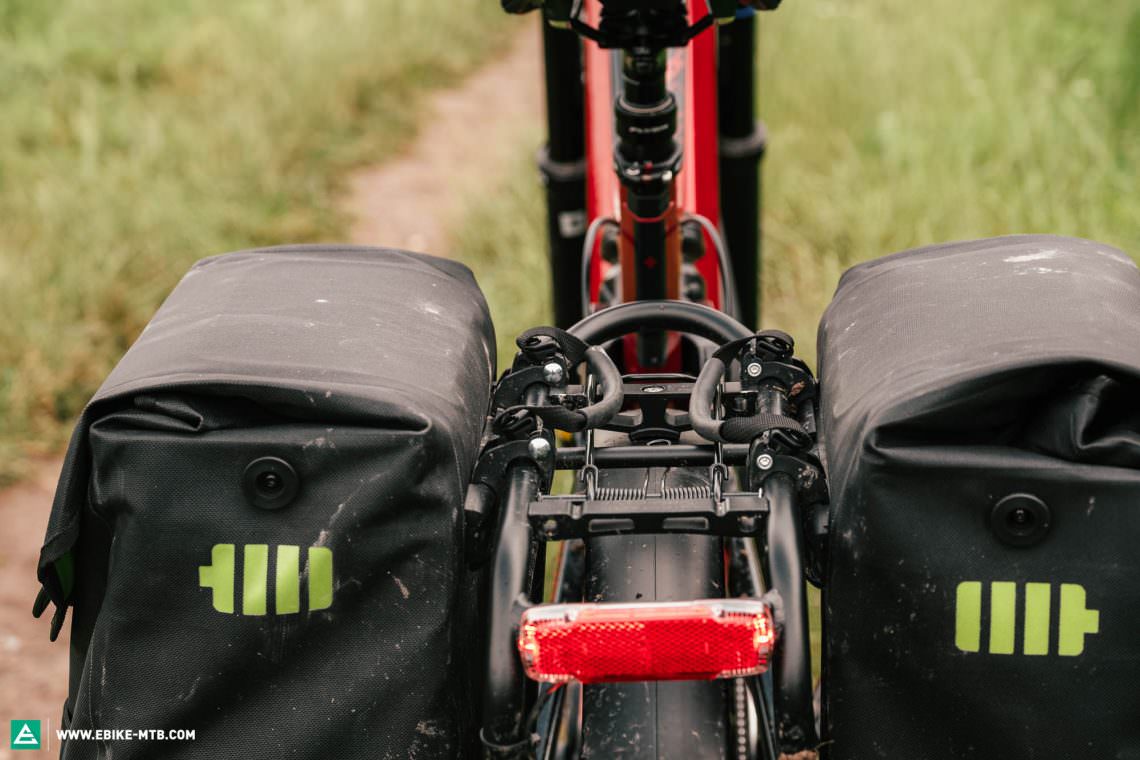
The tops, flops and the most exciting insights from our search for the best E-trekking bike
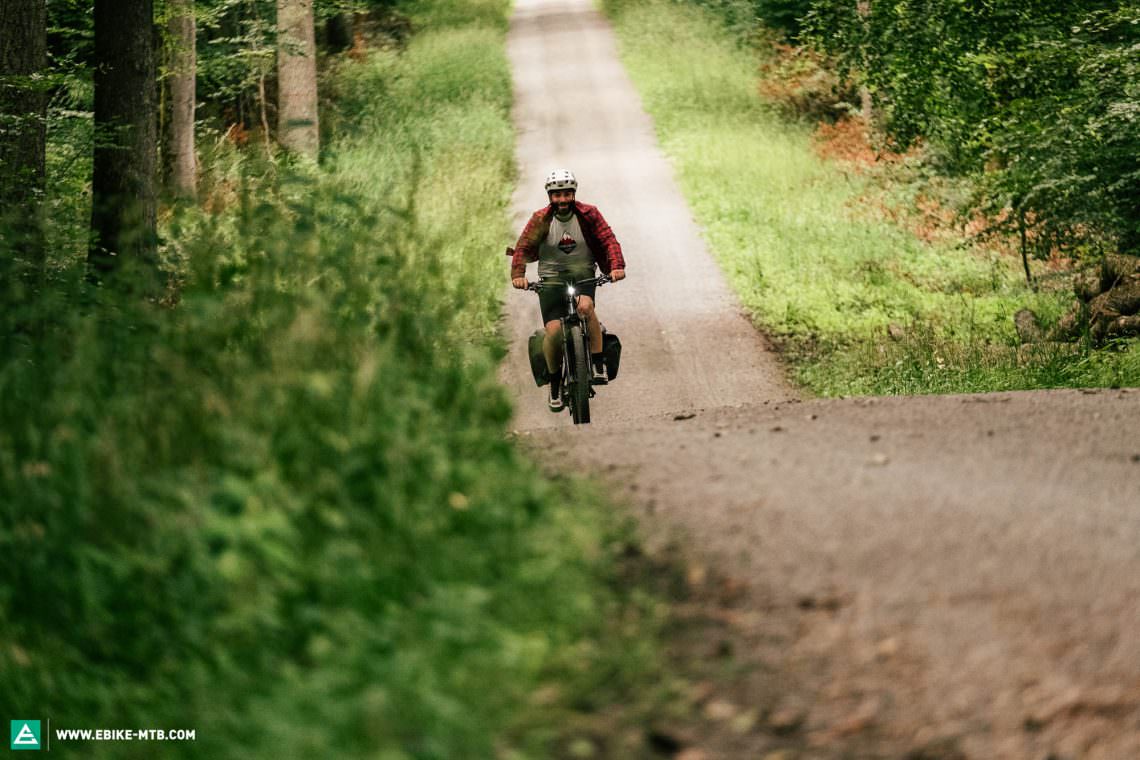
We were looking for the all-rounders among modern E-trekking bikes, touring oriented eMTBs and E-gravel bikes that offer a well-thought-out overall concept, allowing you to travel safely and comfortably. Whether off- or on-road, with or without luggage, on long journeys or just commuting, the best bike on test should and can perform convincingly in all scenarios.
Our group test of different concepts and the latest bikes gave us some key insights, allowing us to answer vital questions that almost all E-trekking riders will ask themselves. Below, we’ll take a look at the high- and lowlights of the group test.
The tops, flops and most exciting insights from our search for the best E-trekking bike
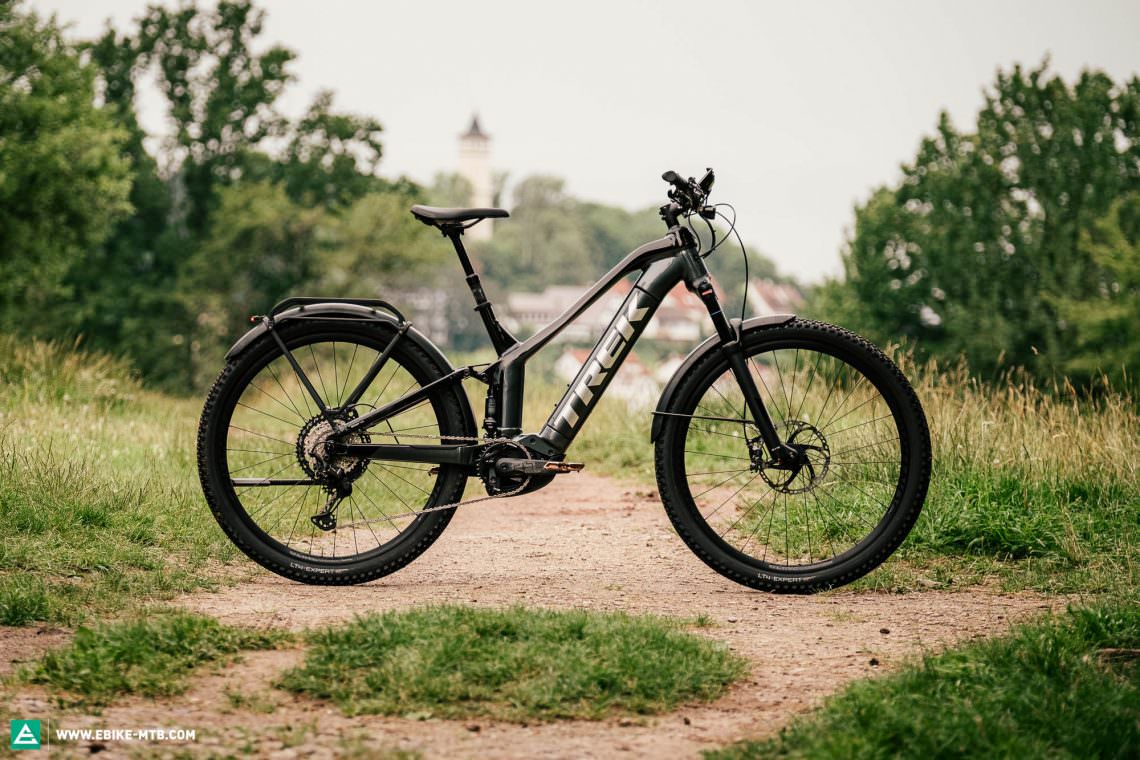
The new generation of eMTBs developed specifically for today’s trekking riders offer an all-new style combined with eMTB DNA that delivers excellent handling both on- and off-road. The performance of the suspension and overall concept of the Trek Powerfly FS matches our requirements of a modern E-trekking bike to a tee. Every detail has been thought through. There is no bike on test offering a more coherent package.
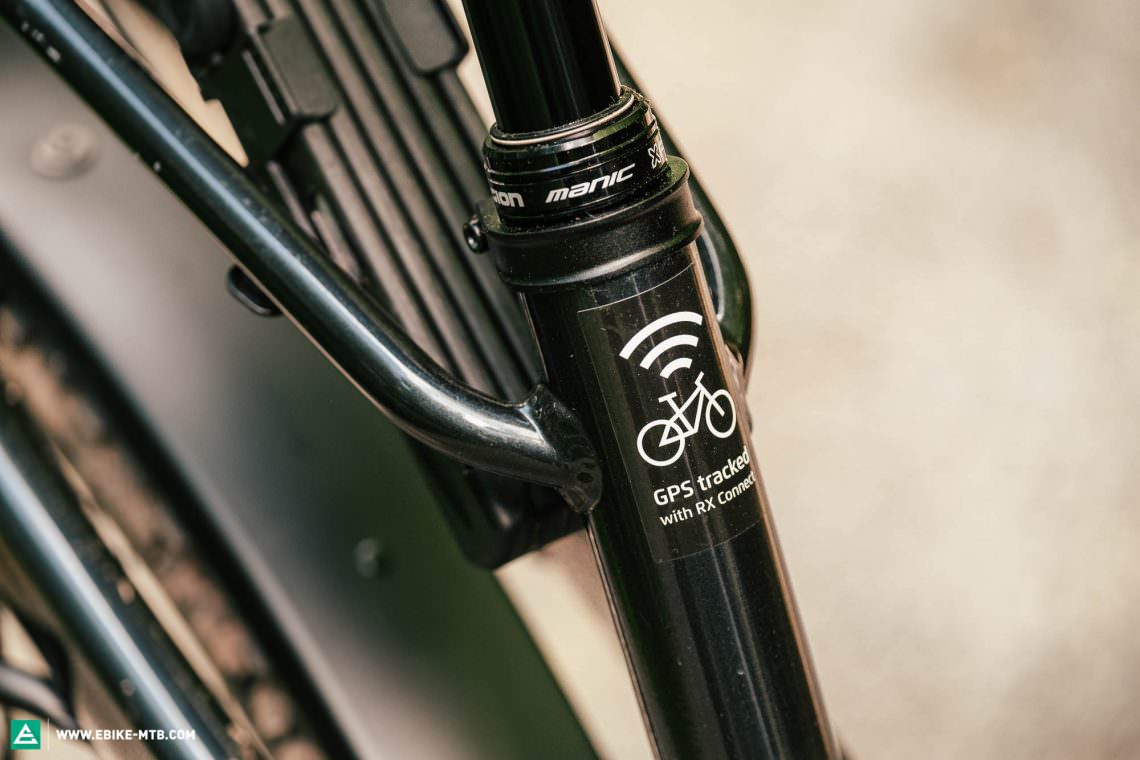
Even if GPS trackers can’t (yet) replace a physical lock, they offer noticeably more peace of mind when parking your bike outside. Although only a few of the bikes on test come with anti-theft protection as standard, you can almost always have a GPS tracker retrofitted, allowing you to track your bike. Riese & Müller take it one step further with their in-house security concept (RX-Connect) consisting of a GPS tracker, eSIM and insurance coverage. If your bike gets stolen and can’t be recovered, it will be replaced. Riese & Müller charge an annual fee for the comprehensive service, starting at € 114.
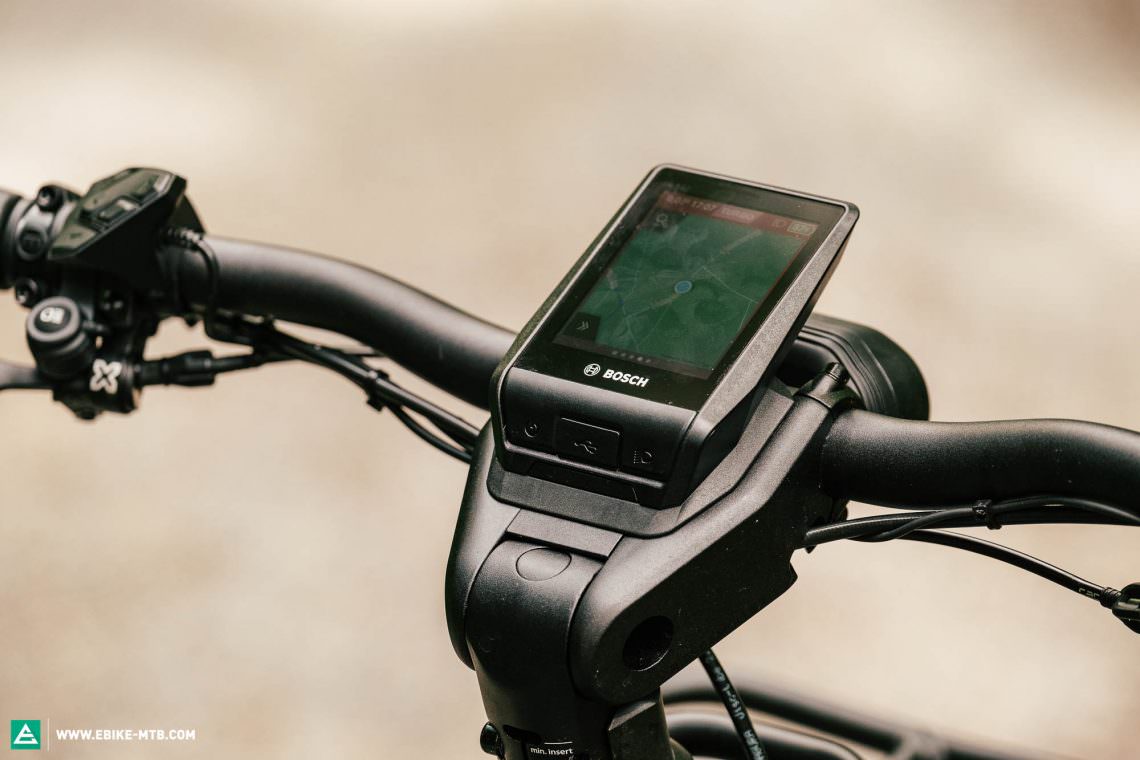
The Bosch Nyon onboard computer combines all the features trekking riders need, showing competitors how it’s done. With its intuitive interface, touch display, good integration and numerous features including range-based navigation, it’s the pioneer among E-trekking bike displays.

Knobby tires aren’t only good for mountain bikes, they’re also beneficial on gravel and asphalt! The best of them can strike a good balance between rolling resistance and grip. They also play an important role in comfort and the overall ride feel. Higher volume tires offer more damping, especially on hardtails. The large 2.4″ Bontrager LT4 featured on the Trek Powerfly FS Expert could make some of the other bikes a lot more comfortable to ride.

With integrated suspension, this dropper post doesn’t just improve comfort when getting on and off the bike but also while riding, easing the shock of curbs and potholes. The air pressure can be adjusted to suit the rider’s weight. An excellent upgrade for more comfort on any hardtail.

Smart progressive support modes and tuning of motor characteristics are the future of touring-oriented eMTBs as well as trekking ebikes. They regulate the motor’s output depending on the rider’s input so that you don’t constantly have to switch back and forth between different support modes.

An adjustable stem allows you to adjust the riding position to suit your preferences and use case, allowing everyone to find their ideal riding position and remain comfortable on long rides. Unfortunately, only CENTURION and Kalkhoff offer this.
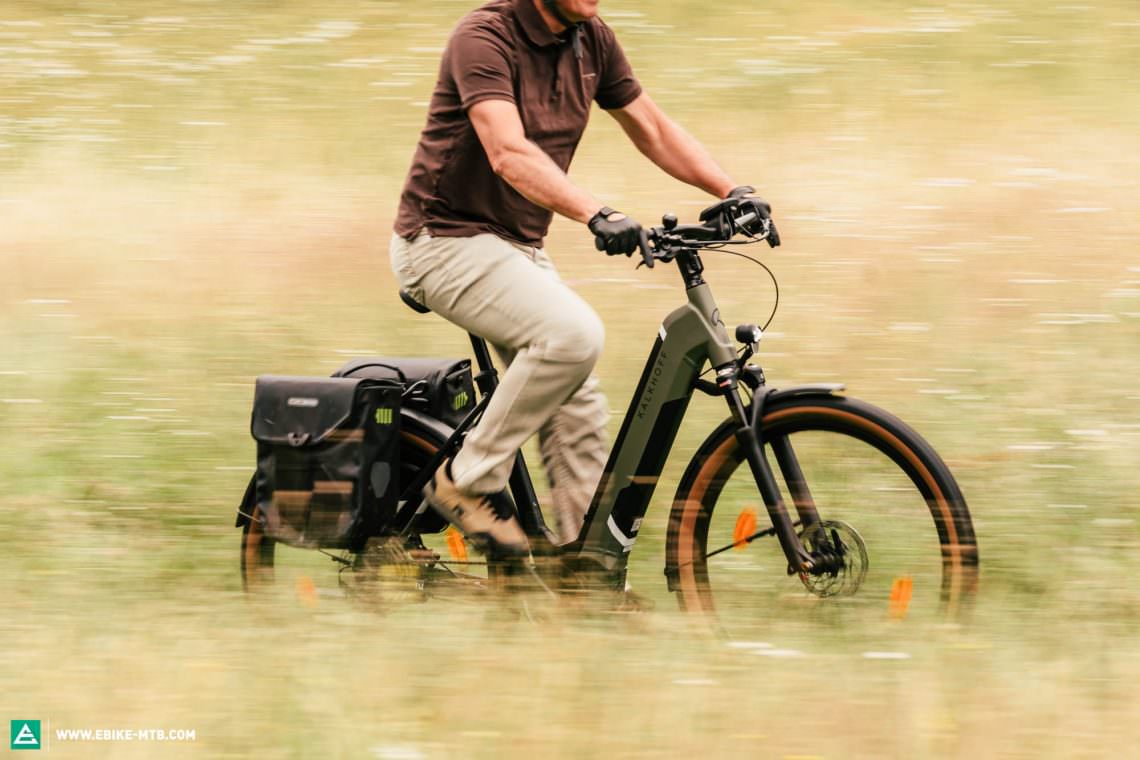
The Kalkhoff Entice 5 Advanced+ lacks stability. It starts wobbling at moderate speeds, making it difficult to control and demanding the rider’s full attention. The effect is amplified when carrying luggage, even if you stay well below the maximum payload of 144 kg.
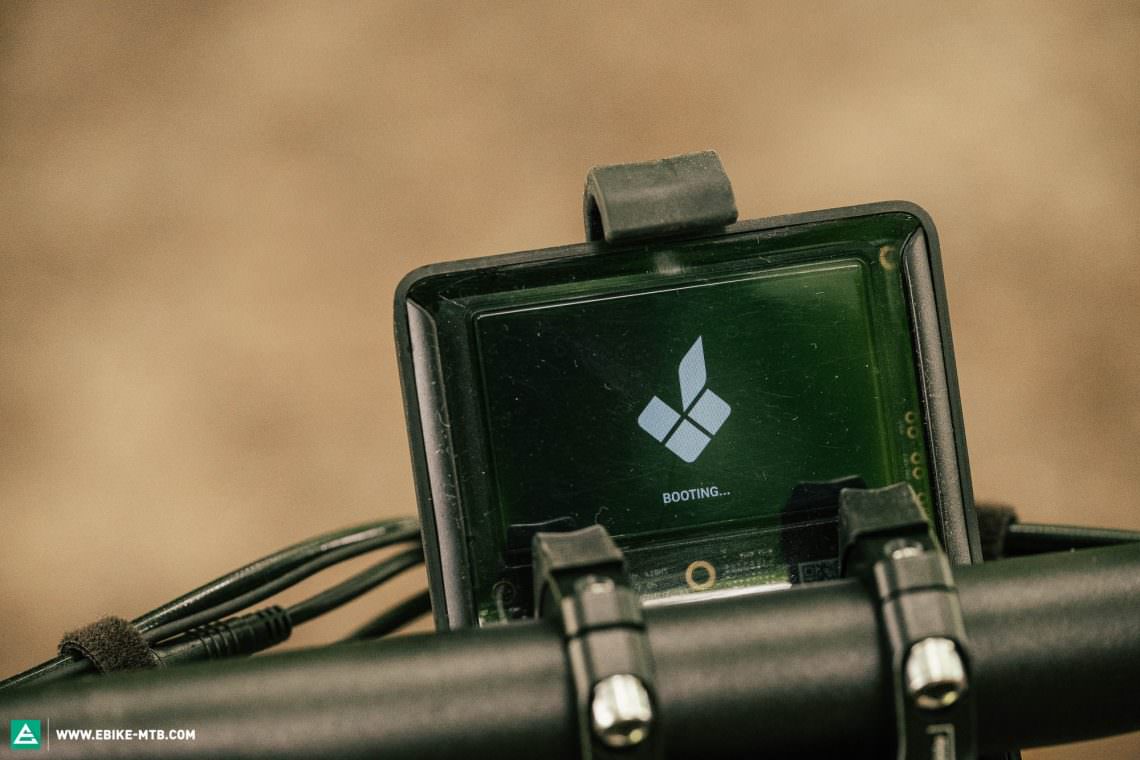
30 seconds to boot? Sounds like Windows 95 but it’s a reality in this test. The Greyp T5.2 is chock-full of modern features but it takes too long for the system to start up. The cluttered cables and numerous connectors also belong in the past. There is a lot of room for improvement here.
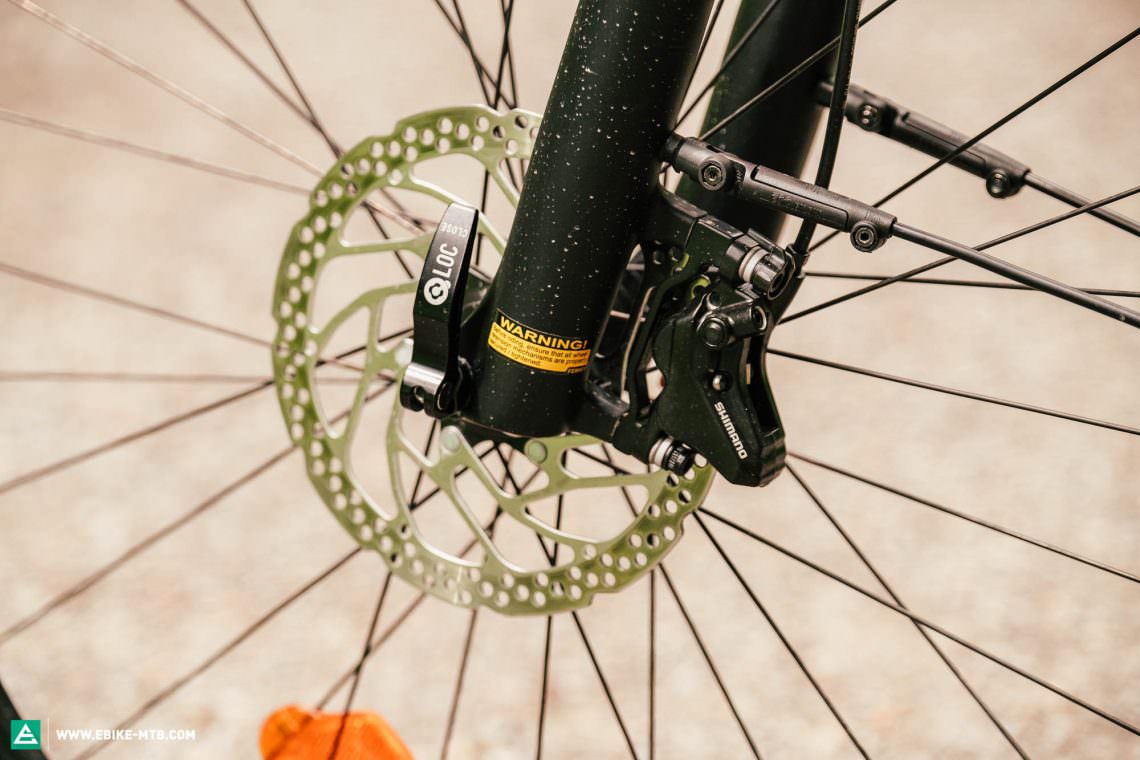
Almost all brands on test rely on brakes from the mountain bike sector. However, some resort to cheap and underpowered models paired with small rotors. Doing so limits the potential and, more crucially, safety of some bikes, especially for heavy riders and loaded touring. Kalkhoff disappointed with brakes that are simply inadequate for the high payload of 144 kg.

Displays with no connectivity options and a limited range of functions such as the Bosch Intuvia and the Shimano SC-E5003 are long outdated. With Bosch systems, we recommend upgrading to the Nyon display or the COBI.Bike system, turning your smartphone into a command centre. These offer numerous additional features and navigation options.
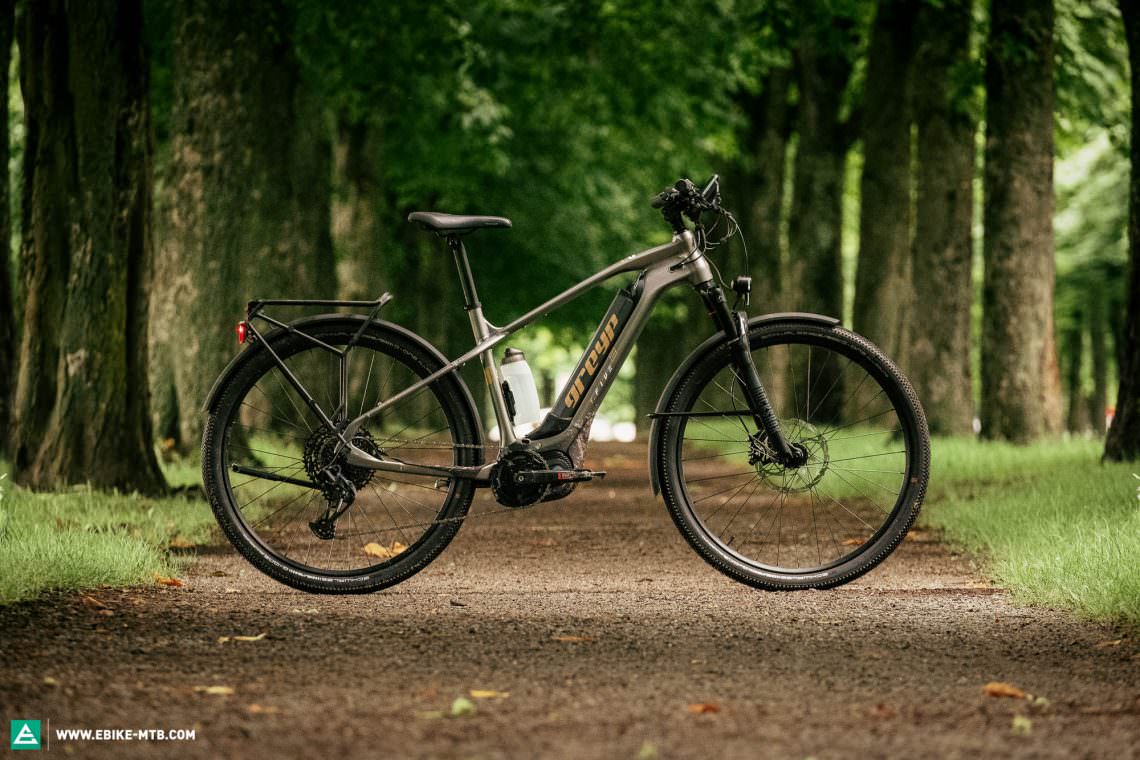
Usually, the biggest advantage of a hardtail is its price. They also require significantly less maintenance compared to a full-suspension model due to the lack of a shock and fewer moving parts. If you’re considering buying a hardtail despite the lack of rear suspension, we recommend looking for a model with a suspended seat post and high-volume tires for added comfort. Otherwise, riding off-road is bound to be a drag.

Seven out of eight bikes rely on classic panniers just like those found on traditional trekking bikes. Unfortunately, this isn’t possible on the Niner as most standard panniers are too big for the special rack on the E-gravel bike, getting in the way while pedalling. Fortunately, Niner have their own set of perfectly-fitting bags, so you can still carry your luggage.
The best ebike for modern trekking: Trek Powerfly FS 9 Equipped
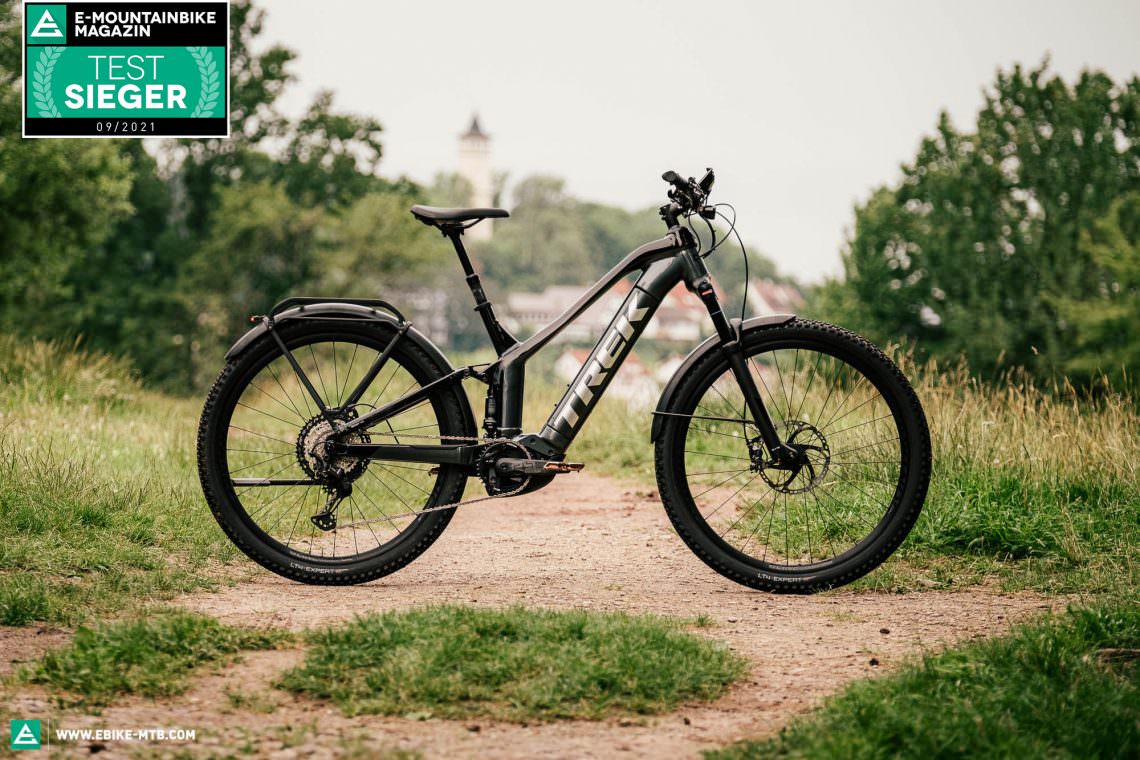
27.1 kg, size L | € 6,999 | Click for review
In our spectacular group test of modern ebikes for trekking, the Trek Powerfly FS 9 Equipped prevailed with its well-thought-out and innovative concept, ignoring conventional bike categorisations. With its modern approach, it manages to combine the best of both eMTBs and E-trekking bikes, thereby defining a new generation of eMTBs for modern trekking and touring. The optimised suspension tune, balanced riding position and good-natured handling make it fun and confidence-inspiring to ride, regardless of whether you’re on- or off-road. Trek have considered everything down to the smallest detail, developing a coherent and versatile package that makes use of current technology to cover everything from off-road commuting to weekend trips and loaded multi-day tours. The successful concept is rounded off with a classy look and up-to-date connectivity thanks to the Bosch SmartphoneHub. Whether for trekking newbies or experienced long-distance pros, we can wholeheartedly recommend the Trek Powerfly FS 9 Equipped to everyone. It’s the 2021 E-trekking bike Best in Test.
Hier geht’s zum ausführlichen Test des Trek Powerfly FS 9 Equipped
Unser Trekking E-Bike Kauftipp: CENTURION Country R2600i
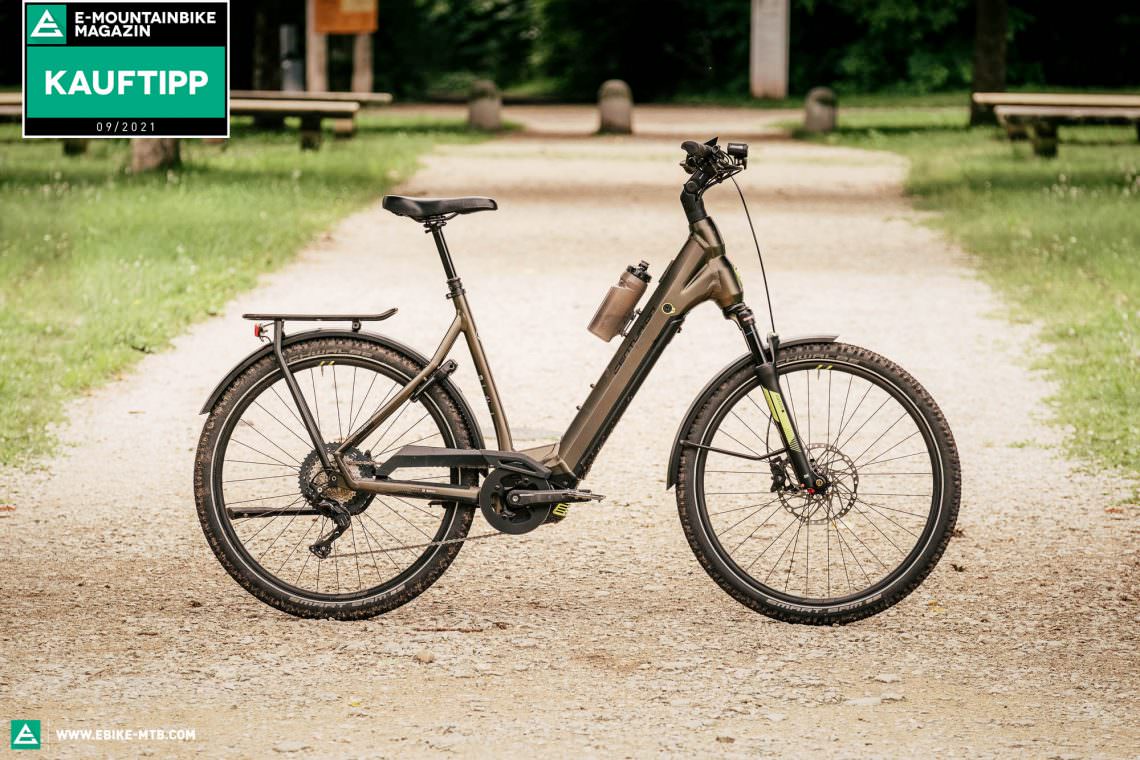
26.6 kg, size L | € 4,199 | Click for review
The CENTURION E-Fire Country F3500 showed what it’s capable of in our 2020 off-road step-through group test. Its successor, the revised CENTURION Country R2600i with a Bosch motor, was able to prove itself against the competition in this E-trekking group test, coming out as one of the best ebikes in the modern trekking segment. It makes the most of the added comfort and safety of a step-through design, performing well on long (off-road) tours and weekend trips thanks to its stable handling and relaxed riding position. Even when riding off-road and carrying luggage, its intuitive yet agile handling makes it easy to ride. The only drawback is the limited connectivity and lack of navigation functionality. However, it’s the second most affordable bike on test at € 4,199, so you can budget for an upgrade to a Nyon display. The package is rounded off with good-quality components and an attractive price, making the CENTURION Country R2600i our well-deserved Best Buy!
Hier geht’s zum ausführlichen Test des CENTURION Country R2600i
The loser of the test: Kalkhoff Entice 5 Advanced+
In every test there are winners and losers. The Kalkhoff Entice 5.B Advanced+ is the latter. With its low step-through and high 170 kg maximum permissible weight limit – the highest payload in the test field – the off-road step-through bike looks to be the perfect companion for heavier riders and those who want to haul a lot of luggage. Unfortunately, its ambitions were set too high and it can’t deliver on its promise. The Kalkhoff Entice 5.B Advanced+ lacks the stability and components that are required to cope with such high payloads. Even at low speeds, the handling feels unsteady, resulting in a demanding ride. If you add luggage to the rack, this effect becomes noticeably amplified, even if you stay well below the maximum payload. It falls even further behind the competition in terms of riding comfort and braking performance. The Entice 5.B Advanced+ is easy to navigate through city traffic at low speeds, but it isn’t suitable for trekking on forest and meadow paths or loaded touring, dropping completely off the end of the test field. Click here for the full review.
Test bike overview
CENTURION Country R2600i | FLYER Goroc3 6.50 | Greyp T5.2 | Kalkhoff Entice 5.B Advanced + | MERIDA eONE-FORTY EQ | Niner RLT e9 RDO | Riese & Müller Homage GT Touring | Trek Powerfly FS 9 Equipped
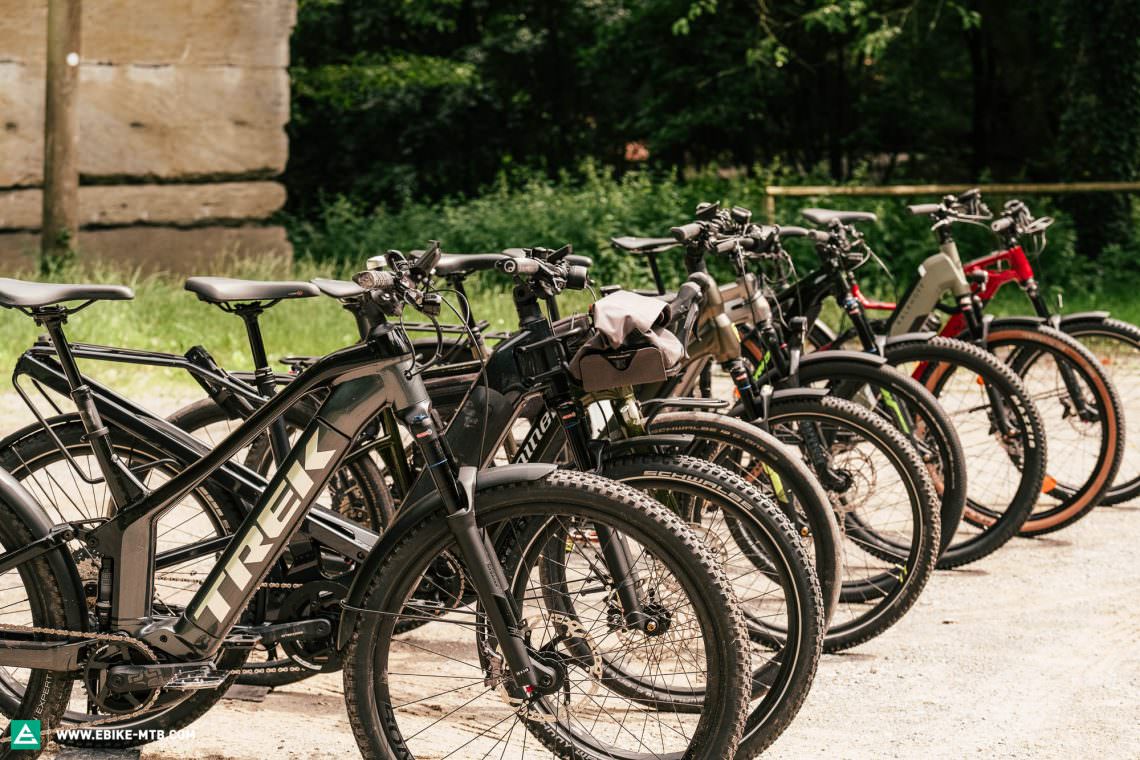
Did you enjoy this article? If so, we would be stoked if you decide to support us with a monthly contribution. By becoming a supporter of E-MOUNTAINBIKE, you will help secure a sustainable future for high-quality cycling journalism. Click here to learn more.
Words: Rudolf Fischer, Jonas Müssig Photos: Jonas Müssig, Valentin Rühl









